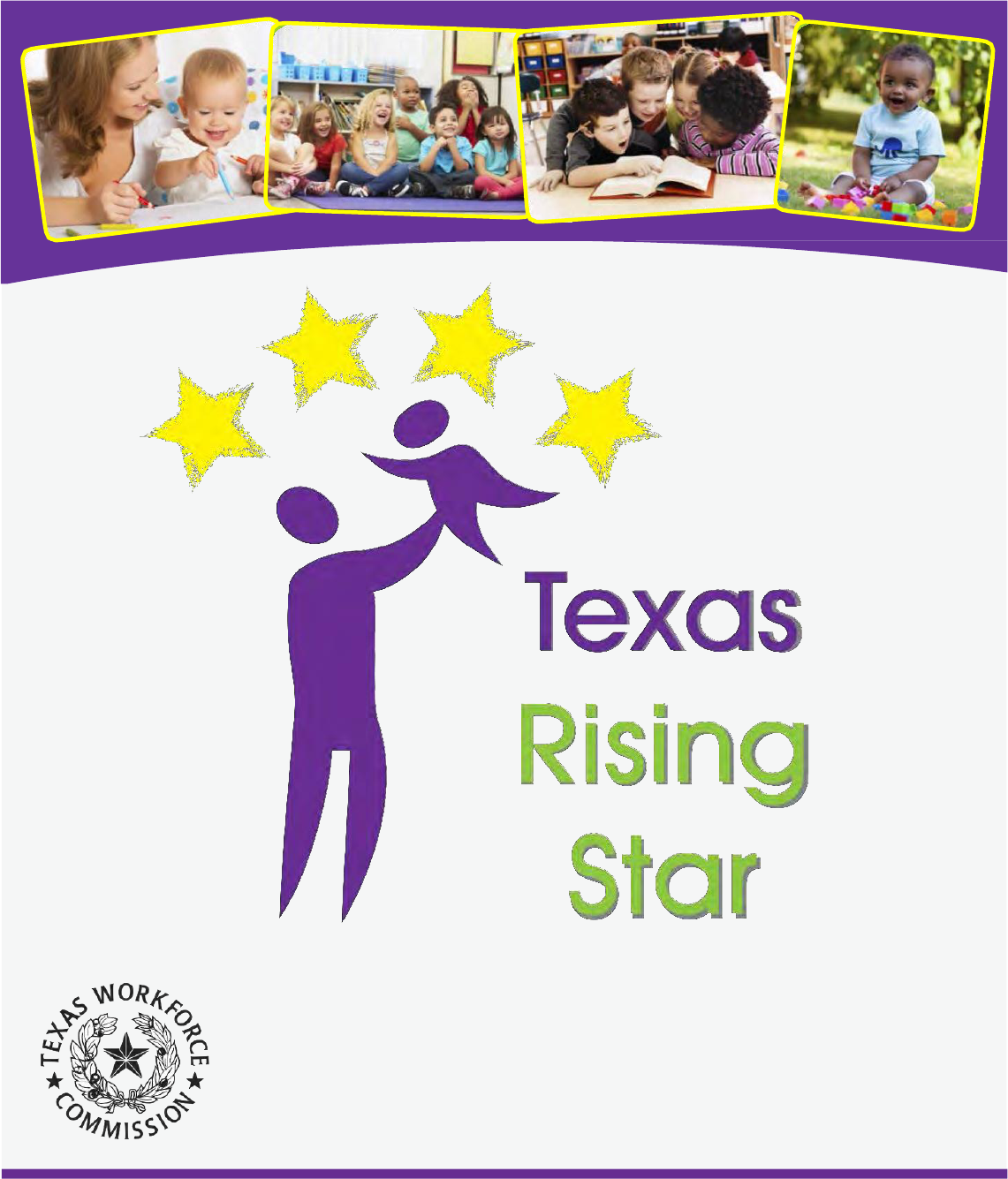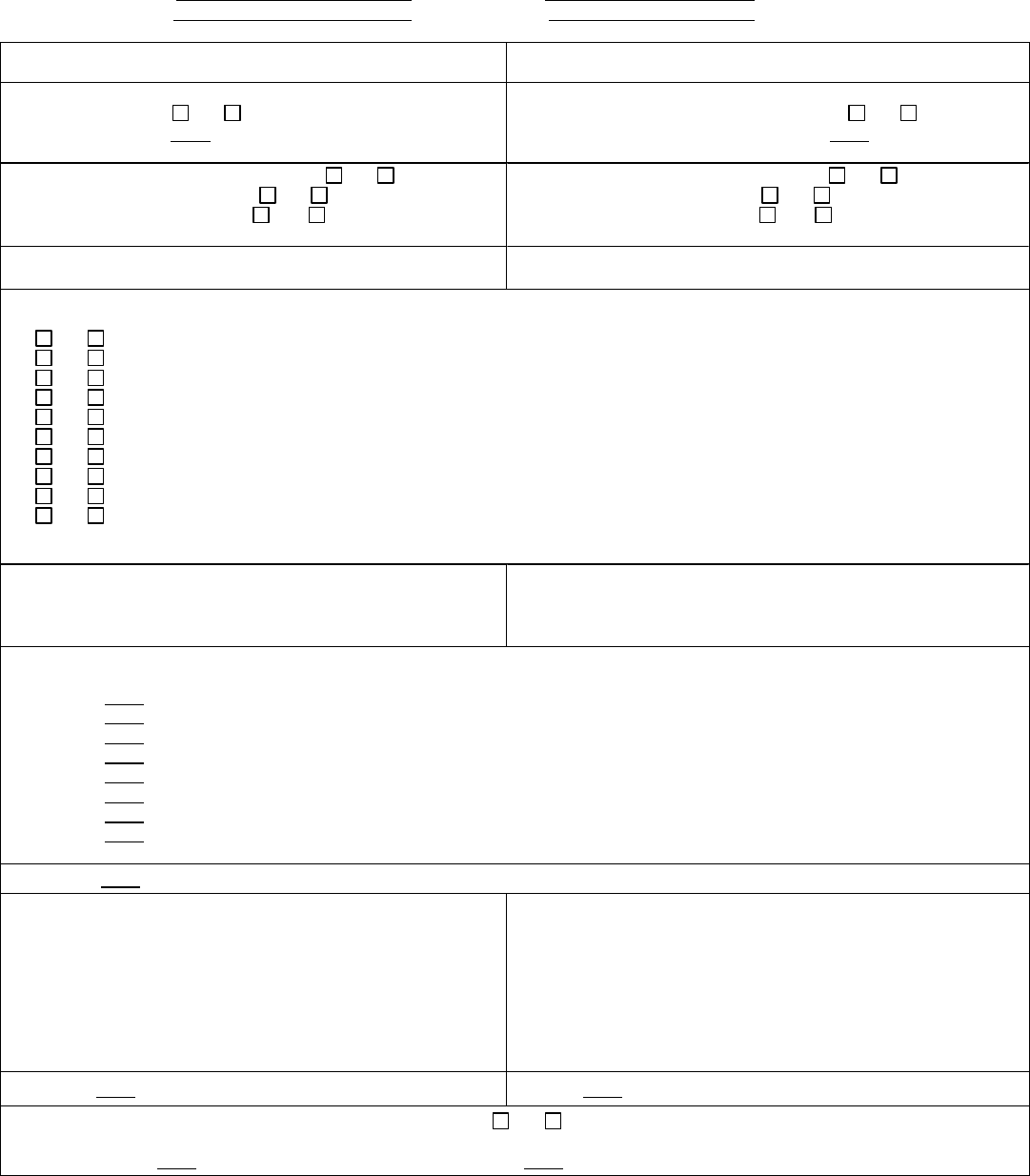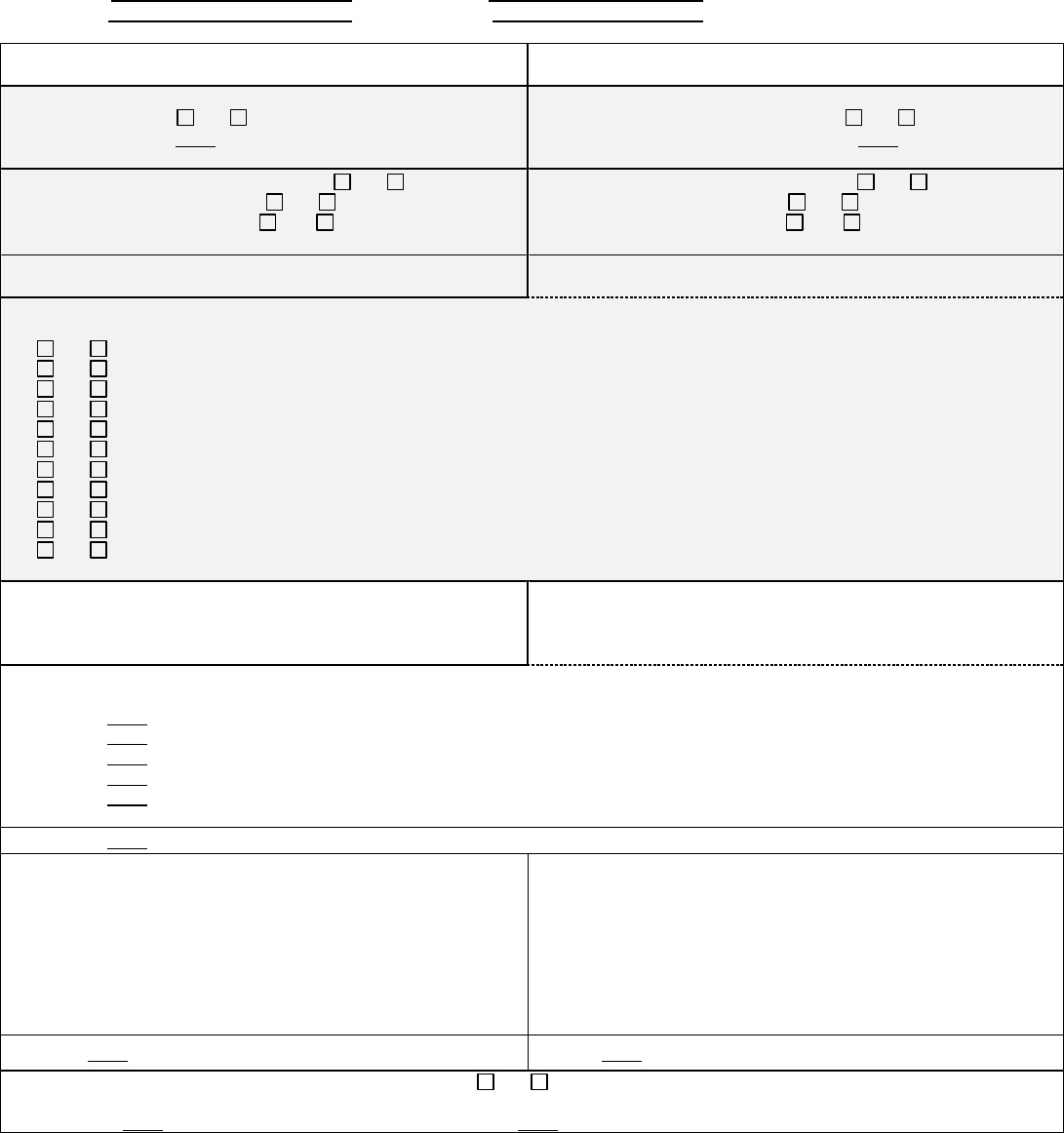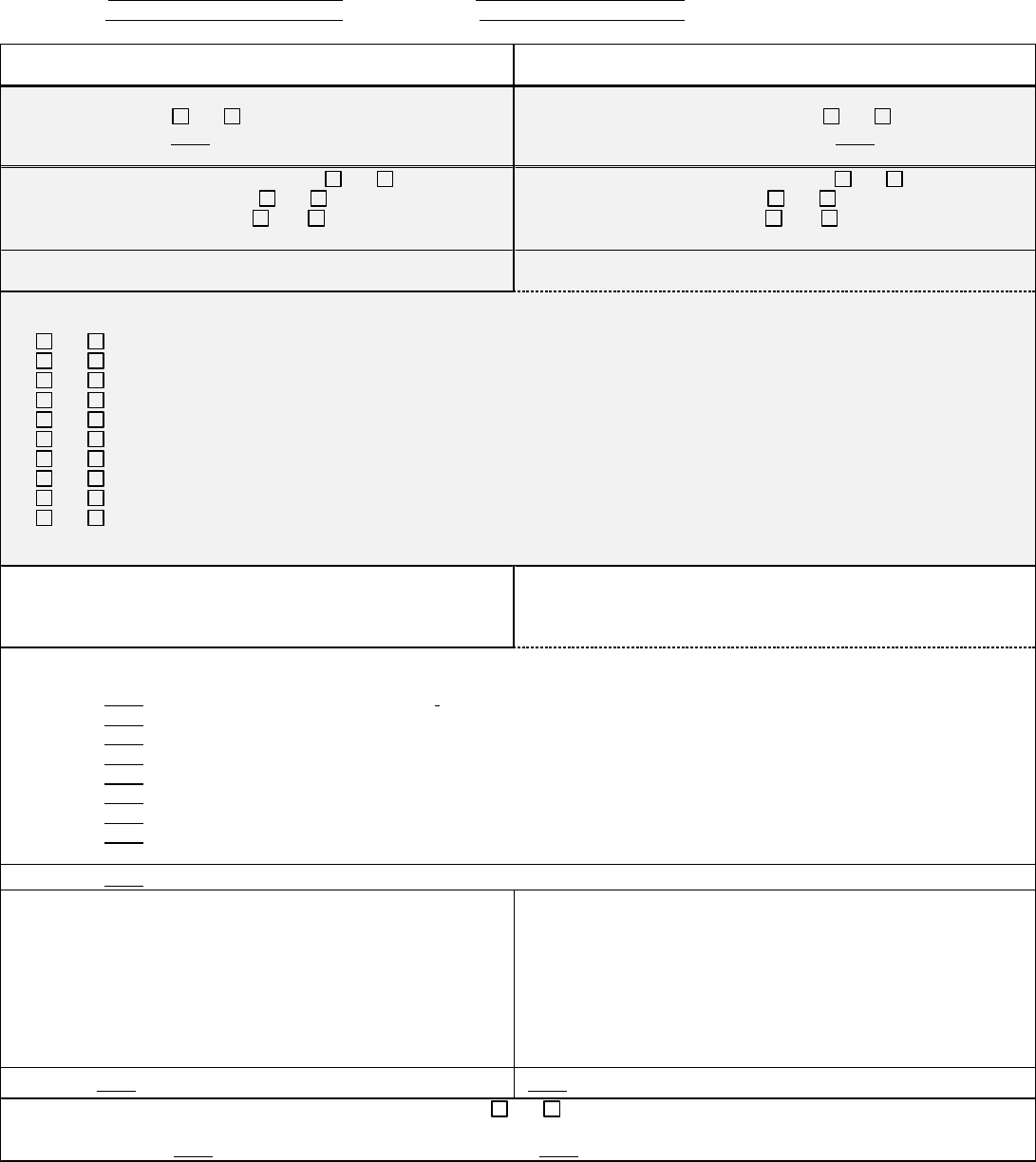
Revised
March 2019
CHILD CARE PROVIDER
CERTIFICATION GUIDELINES
A Quality
Ra
ting and Improvement System for Texas
Table of
Contents
SECTION 1: INTRODUCTION TO TEXAS RISING STAR ..................................................................................1.1
THE TEXAS RISING STAR PROVIDER IN THE CHILD CARE DELIVERY SYSTEM ..........................................................1.1
TEXAS RISING STAR: A QUALITY RATING AND IMPROVEMENT SYSTEM FOR TEXAS .............................................1.1
HISTORICAL PERSPECTIVE.......................................................................................................................................1.1
TEXAS RISING STAR REVISION (2013–2015) ...........................................................................................................1.2
TEXAS RISING STAR REVISION (2016) AND ONGOING ...........................................................................................1.2
ENHANCED REIMBURSEMENTS FOR STAR LEVEL RATING .....................................................................................1.2
SUMMARY OF THE TEXAS RISING STAR CERTIFICATION CRITERIA.........................................................................1.3
STAR LEVEL SCORING..............................................................................................................................................1.4
A SYSTEMS APPROACH TO IMPROVING THE QUALITY OF CHILD CARE .................................................................1.5
TEXAS RISING STAR ASSESSOR AND MENTOR ROLES.............................................................................................1.5
SECTION 2: TEXAS RISING STAR CERTIFICATION PROCESS ......................................................................2.1
ELIGIBLE PROVIDERS...............................................................................................................................................2.1
TEXAS RISING STAR BUILDS UPON CHILD CARE LICENSING STANDARDS...............................................................2.1
CRITICAL DEFICIENCIES ...........................................................................................................................................2.2
HIGH/MEDIUM-HIGH DEFICIENCIES …………………………………………………………………………………………………………………2.3
TRS SCREENING PROCESS .......................................................................................................................................2.3
TRS APPLICATION PROCESS (Non-Nationally Accredited Providers) .......................................................................2.4
RECERTIFICATION PROCESS (Non-Nationally Accredited Providers) .......................................................................2.6
U.S. DEPARTMENT OF DEFENSE AND NATIONALLY ACCREDITED PROVIDERS.......................................................2.6
TEXAS RISING STAR APPLICATION PROCESS (Nationally Accredited Providers)…………….. .....................................2.7
RECERTIFICATION PROCESS (Nationally Accredited Providers)…………….. ………………………………………………………………………...2.7
CHILDREN’S LEARNING INSTITUTE ENGAGE RESOURCES .......................................................................................2.8
SECTION 3: TYPES OF TEXAS RISING STAR PROGRAM ASSESSMENTS ...................................................3.1
INITIAL CERTIFICATION ASSESSMENT.....................................................................................................................3.1
ANNUAL UNANNOUNCED MONITORING VISIT ......................................................................................................3.1
RECERTIFICATION ASSESSMENT .............................................................................................................................3.2
STAR LEVEL EVALUATION .......................................................................................................................................3.2
CATEGORY REASSESSMENT ....................................................................................................................................3.2
FACILITY CHANGES ASSESSMENT …………………........................................................................................................3.3
RECONSIDERATION .................................................................................................................................................3.3
DIRECTOR AND STAFF CHANGES ............................................................................................................................3.4
SECTION 4: TECHNICAL ASSISTANCE FOR CERTIFIED PROVIDERS .........................................................4.1
TECHNICAL ASSISTANCE PLAN ................................................................................................................................4.2
SERVICE IMPROVEMENT AGREEMENT ...................................................................................................................4.2
TEXAS RISING STAR PROBATION ............................................................................................................................4.2
LOSING A STAR LEVEL AND LOSING TEXAS RISING STAR CERTIFICATION ..............................................................4.3
SECTION 5: REFERENCES, OFFICIAL DOCUMENTS, AND FORMS ..............................................................5.1
APPLICATION FOR TEXAS RISING STAR PROVIDER .................................................................................................5.1
TEXAS RISING STAR SITE DATA FORM ....................................................................................................................5.3
SCREENING FORM: LICENSED CHILD CARE CENTERS .............................................................................................5.4
SCREENING FORM: AFTER-SCHOOL PROGRAMS....................................................................................................5.6
SCREENING FORM: LICENSED / REGISTERED CHILD CARE HOMES ........................................................................5.8
CHECKLIST: DOCUMENTS FOR REQUIRED MEASURES .........................................................................................5.10
CHECKLIST: DOCUMENTS FOR POINTS-BASED MEASURES ..................................................................................5.11
TEXAS RISING STAR ASSESSMENT TRACKING FORM ............................................................................................5.12
TEXAS RISING STAR TECHNICAL ASSISTANCE AGREEMENT..................................................................................5.13
TEXAS RISING STAR CCL DEFICIENCIES ACKNOWLEDGEMENT FORM..................................................................5.14
TEXAS RISING STAR SERVICE IMPROVEMENT AGREEMENT .................................................................................5.15
TEXAS RISING STAR ASSESSOR PROTOCOL ...........................................................................................................5.16
ASSESSOR ENTRANCE AND EXIT MEETING WITH DIRECTOR/PROGRAM ADMINISTRATOR ................................5.20
TEXAS RISING STAR ASSESSMENT/MONITORING VISIT REPORT ..........................................................................5.22
TEXAS RISING STAR MENTOR PROTOCOL.............................................................................................................5.24
TEXAS RISING STAR ACCREDITATION RECOGNITION APPLICATION PROCESS .....................................................5.30
CHAPTER 809 OF THE TEXAS ADMINISTRATIVE CODE .........................................................................................5.32
Page | 1.1
TRS PROVIDER GUIDELINES ©2019 TEXAS WORKFORCE COMMISSION
SECTION 1: INTRODUCTION TO TEXAS
RISING STAR
The Texas Rising Star (TRS) program is a voluntary, quality-based child care rating system of child care
providers participating in the Texas Workforce Commission’s (TWC) subsidized child care program. TRS
certification is available to licensed centers and licensed and registered child care home providers that meet the
certification criteria. The TRS program offers three levels of certification (2-star, 3-star, and 4-star) to encourage
providers to attain progressively higher levels of quality.
THE TEXAS RISING STAR PROVIDER IN THE CHILD
CARE
DELIVERY
SYSTEM
Across Texas, parents and families enroll their children into child care programs, including center-based and
home-based programs. Numerous research studies have shown that at-risk children who attend higher quality child
care programs are more prepared for school entry than children who do not attend quality child care programs.
Those providers that voluntarily achieve TRS provider certification, offering quality care that exceeds the Texas
Health and Human Services Commission (HHSC) minimum Child Care Licensing (CCL) standards for director
and staff qualifications, caregiver-child interactions, age-appropriate curricula and activities, nutrition and
indoor/outdoor activities, and parent involvement and education, are in a better position to contribute to the early
development of children. As providers progress through the levels of TRS provider certification, they contribute
progressively more to the development of the children they serve daily.
TEXAS RISING STAR: A QUALITY RATING AND
IMPROVEMENT
SYSTEM FOR
TEXAS
In recent years, many states have adopted quality rating and improvement systems (QRIS) to measure the quality
of child care programs and to provide professional development to help these programs improve the quality of care
they offer to children and families.
In September 2013, the Texas Early Learning Council (TELC) released recommendations for the state to develop
a statewide, cross-sector QRIS for Texas. One of the recommendations included Texas Rising Star as the basis for
a QRIS in Texas.
HISTORICAL
PERSPECTIVE
In the mid- to late-1970s, federal standards for quality child care were implemented across the nation. By the
early 1980s these federal standards were discontinued. However, in Texas a state workgroup was then formed to
develop standards for child care providers. The research from this workgroup formed the basis for the refinement
and development of the TRS provider certification criteria. These criteria were in use from June 1991 to October
2000.
The TRS Child Care Provider Certification Guidelines (TRS Provider Guidelines) were revised and issued in
October 2000, incorporating the recommendations of a workgroup formed in 1999. The workgroup consisted of
Page | 1.2
TRS PROVIDER GUIDELINES ©2019 TEXAS WORKFORCE COMMISSION
TWC staff, Board staff, child care contractors, and child care providers from across the state. In 2000, the revisions
mainly updated the assessment and certification procedures. In 2003, TWC updated the recertification and
monitoring time frames for TRS providers.
TEXAS RISING STAR REVISION
(2013–2015)
Effective September 1, 2013, House Bill (HB) 376, 83rd Texas Legislature (Regular Session), amended Chapter
2308 of the Texas Government Code relating to the TRS program. As amended, Chapter 2308 required TWC’s
three-member Commission (Commission) to:
•
create a TRS program review workgroup to recommend revisions to the TRS program;
•
propose rules that incorporate the TRS workgroup’s recommended revisions;
•
establish graduated reimbursement rates for TRS providers;
•
require Local Workforce Development Boards (Boards) to use at least 2 percent of their annual allocations
for quality child care initiatives; and
•
make funds available for Boards to hire TRS assessors and mentors to provide TRS program technical
assistance to child care providers.
In 2013, TWC convened a workgroup dedicated to the revision of TRS as required by House Bill (HB) 376 of
the 83
rd
Texas Legislature. The purpose of the TRS workgroup was to recommend revisions to the TRS
program. The TRS workgroup invited stakeholders from around Texas to participate in workgroup discussions
and provide input into the proposed TRS program revisions.
HB 376 required that the workgroup submit recommendations proposing changes to TRS by May 2014, and
rules that incorporate the proposed changes by September 2014. The proposed changes to TRS were approved
by TWC on January 27, 2015.
TEXAS RISING STAR REVISION (2016) AND ONGOING
During the fall of 2015, TWC held several public meetings to solicit input on the child care program, including the
TRS program. Also, in January 2016, TWC hosted two provider work group sessions and a TRS assessor/mentor
group to gather feedback and recommendations on the 2015 TRS revisions. Based on the input from these
stakeholder meetings, the Commission recommended modifications to the TRS Provider Guidelines designed to
streamline the application and assessment process and to clarify and improve the TRS criteria. TWC continually
monitors the progress of TRS and will review the program every four years.
ENHANCED REIMBURSEMENTS FOR STAR LEVEL
RATING
Texas Government Code §2308.315 mandates that the minimum reimbursement rate for a TRS provider must be
greater than the maximum rate established for a provider that is not TRS certified for the same category of care,
i.e., at least:
•
5 percent higher for a provider with a 2-star rating;
•
7 percent higher for a provider with a 3-star rating; and
•
9 percent higher for a provider with a 4-star rating.
Further, to expand local flexibility, TWC rules allow Boards to establish a higher enhanced reimbursement rate
for TRS providers than those provided above, so long as a minimum 2 percentage point difference between each
star level is maintained.

Page | 1.3
TRS PROVIDER GUIDELINES ©2019 TEXAS WORKFORCE COMMISSION
SUMMARY OF THE TEXAS RISING STAR
CERTIFICATION
CRITERIA
Below is a summary of the TRS certification criteria. Detailed information regarding each category can be
found in Section 2 of these guidelines. Based on the recommendations of the TRS workgroup, the TRS Provider
Guidelines establish:
•
required “met” or “not met” measures for base certification; and
•
points-based measures scored on a scale of 0–3 points that may lift a provider to a higher star level.
Each subcategory may contain only required measures, only points-based measures, or a combination of the two.
Category 1: Director and Staff Qualifications and Training
Measures relating to the education, experience, and training of staff, including directors and all caregivers
SUBCATEGORY
REQUIRED
(MET/NOT
MET)
POINTS-BASED
Director Qualifications and Training
X
X
Caregiver Qualifications, Orientation, and Training
X
Caregiver Qualifications and Training
X
Category 2: Caregiver-Child Interactions
Measures relating to group size, caregiver to child ratio, and quality of interactions between caregivers and
children in the classroom
SUBCATEGORY
REQUIRED
(MET/NOT
MET)
POINTS-BASED
Group Size/Staff Ratios (center-based only)
X
Warm and Responsive Style
X
Language Facilitation and Support
X
Play-Based Interactions and Guidance
X
Support for Children’s Regulation
X
Category 3: Curriculum
Measures relating to the lesson plans, curriculum, and instructional formats that caregivers use in the classroom
SUBCATEGORY
REQUIRED
(MET/NOT MET)
POINTS-
BASED
Lesson Plans and Curriculum
X
Planning for Special Needs and Respecting Diversity
X
Instructional Formats and Approaches to Learning
X
Category 4: Nutrition and Indoor/Outdoor Activities
Measures relating to nutrition policies and practices, as well as the equipment, materials, and arrangement of the
indoor and outdoor learning environments
SUBCATEGORY
REQUIRED
(MET/NOT MET)
POINTS-BASED
Nutrition
X
X
Indoor Learning Environments
X
X
Outdoor Learning Environments
X

Page | 1.4
TRS PROVIDER GUIDELINES ©2019 TEXAS WORKFORCE COMMISSION
Category 5: Parent Involvement and Education
Measures relating to the education and involvement of parents and families in the program
SUBCATEGORY
REQUIRED
(MET/NOT MET)
POINTS-BASED
Parent Education
X
X
Parent Involvement
X
X
STAR LEVEL SCORING
If a provider meets all the required measures for TRS certification, the score of the points-based measures will
determine the star level for each category and ultimately for the provider. Points-based measures are scored, and
points awarded through on- site assessments.
Each category of the certification criteria is given a star level rating based on the average score across all
subcategory points-based measures in that category. A provider’s overall star designation is based on the lowest
star level achieved across the five categories. The rationale for this scoring protocol is to ensure the provider meets
higher quality standards across measures in all categories.
Example: If a provider scores at a 4-star level in two categories, a 3-star level in one category, and a 2-star level
in two categories, the provider would be certified as a 2-Star Program Provider.
However, a provider that achieves 4-star scores in four of the five categories, but a 2-star score in one category,
will be certified as a 3-Star Program Provider.
The score for a points-based measure in which multiple classrooms are assessed is based on the median score of
the measures which are then averaged.
The methodology for determining the star level of a category is based on the provider’s average score across all
measures of a category:
• 3-star – average score is 1.80 to 2.39 (60–79.9 percent of total points)
• 4-star – average score is 2.4 or greater than 2.4 (80 percent of total points)
Page | 1.5
TRS PROVIDER GUIDELINES ©2019 TEXAS WORKFORCE COMMISSION
A SYSTEMS APPROACH TO IMPROVING THE QUALITY OF
CHILD
CARE
Certifying providers that meet the TRS certification criteria, awarding quality improvement equipment and
materials, and offering training for those in the early care and education field are all part of a systematic
approach to addressing the quality of life for all young children in care outside their homes.
A continuum of quality child care may be described in the following manner:
•
Regulatory Requirements (minimum CCL standards): Defines the minimum acceptable level of care.
•
Self-Assessment: Enables an individual facility to evaluate its own progress in improving the quality of care.
•
TRS Provider Certification: Provides measurable indicators of quality child care practices that exceed the
minimum CCL standards.
The continuum of quality child care represents a systematic progression in the quality of early childhood
programs. Data about a provider’s performance are collected in partnership by state agencies, the child care
contractors, and child care providers. Measurable data include factually quantifiable information, such as
director and caregiver qualifications and training, group sizes, a facility’s physical space (indoor and outdoor),
and a program’s policies for nutrition, staff orientation, and parent education. Other data, such as child-staff
ratios, activities, curricula, and caregiver-child interactions, must be collected by observation in individual
programs. Based on the data collected, a provider’s performance may be improved by training, technical
assistance, and resource linkages. The outcome is enhanced physical, emotional, social, and intellectual
development of the children in care.
TEXAS RISING STAR ASSESSOR AND MENTOR
ROLES
Mentor staff assists providers in attaining, maintaining, and improving TRS certification status. An assessor’s
primary focus is conducting assessments to determine TRS certification status and conducting annual monitoring
visits to ensure the level of quality is maintained. Because of the two distinct roles, TWC rules prohibit a mentor
from being an assessor for the same facility. For more information on the roles of assessors and mentors, please
see the assessor and mentor protocols and best practices in the Reference Section. Also see TWC rule §809.134
Minimum Qualification for TRS Assessors and Mentors (Chapter 809).
Page | 2.1
TRS PROVIDER GUIDELINES ©2019 TEXAS WORKFORCE COMMISSION
SECTION 2: TEXAS RISING STAR
CERTIFICATION PROCESS
ELIGIBLE
PROVIDERS
As provided in Texas Government Code §2308.3155, the Texas Rising Star (TRS) program is a voluntary,
quality-based child care rating system for child care providers participating in the Texas Workforce Commission
(TWC) subsidized child care program. Additionally, a child care provider is eligible to apply for TRS
certification if the provider:
(1) has a permanent (non-expiring) license or registration from the Child Care Licensing (CCL);
(2) has at least 12 months of licensing history with CCL and is not on:
•
corrective action with a Local Workforce Development Board (Board) pursuant to Chapter 809,
Subchapter F;
•
a “Notice of Freeze” with TWC pursuant to Chapter 213 of the Texas Labor Code (Enforcement of Texas
Unemployment Compensation Act) or Chapter 61 of the Texas Labor Code (Payment of Wages); or
•
corrective or adverse action with CCL; or
(3) is regulated by and in good standing with the U.S. Military.
Additionally, TRS providers must demonstrate consistent compliance with minimum Child Care
Licensing (CCL) requirements.
TEXAS RISING STAR BUILDS UPON CHILD CARE
LICENSING
STANDARDS
As the child care licensing and regulatory agency for Texas, CCL’s regulations establish minimum licensing
requirements that all child care providers must follow. If a child care provider has repeated licensing deficiencies,
CCL may place the provider on corrective action. CCL may initiate an adverse action, to include a revocation or
suspension of a license, if:
•
deficiencies are not corrected timely;
•
there are repeat deficiencies; or
•
there is an incident or single deficiency that poses an immediate risk to children.
The TRS program is a voluntary rating system for providers choosing to meet standards above minimum CCL
standards. For a provider to meet and maintain TRS program standards, the provider must demonstrate consistent
compliance with minimum CCL standards. Accordingly, as set forth in TWC Child Care Services rule §809.131,
providers placed on corrective or adverse action by CCL are automatically found not to have demonstrated
consistent compliance with minimum licensing standards and, therefore, are not eligible to participate in the TRS
program.
A child care facility is not eligible to apply for TRS certification if, during the most recent 12-month CCL
licensing history, the provider had:
•
any critical licensing deficiencies, as listed in these guidelines;
•
five or more high or medium-high licensing deficiencies, as listed in these guidelines; or
•
10 or more total licensing deficiencies of any type.
Currently certified TRS providers must also adhere to CCL compliance. Impacts of non-compliance can be found
in Section 4 of these Guidelines.

Page | 2.2
TRS PROVIDER GUIDELINES ©2019 TEXAS WORKFORCE COMMISSION
CRITICAL
DEFICIENCIES
Providers are not eligible to apply for TRS if any of the critical deficiencies listed below are cited during the
most recent 12-month CCL licensing period.
CRITICAL DEFICIENCIES – CENTERS
745.641 Background Checks Requirement – Providing Direct Care [HIGH]
745.635 Criminal Convictions or Central Registry Findings – Take Appropriate Action [HIGH]
746.201(9) Permit Holder Responsibilities – Complying with Child Care Licensing Law in Chapter 42, Human Resources
Code [MEDIUM-HIGH]
746.1201(4) Responsibilities of Employees and Caregivers – Ensure No Child is Abused, Neglected, or Exploited [HIGH]
746.1201(5) Responsibilities of Employees and Caregivers – Report Suspected Child Abuse, Neglect, or Exploitation [HIGH]
746.1311(a) Director Annual Training – 30 Hours Required [MEDIUM-HIGH]
746.1315 First Aid and CPR Requirements [MEDIUM-HIGH]
746.2805 Prohibited Punishments [HIGH]
746.3805(a) Administering Medication – How to Administer Medication [HIGH]
746.3805(b) Administering Medication – How to Administer Medication
[(2) HIGH; (1), (3) MEDIUM-HIGH]
CRITICAL DEFICIENCIES – HOMES
745.641Background Checks Requirement – Providing Direct Care [HIGH]
745.635 Criminal Convictions or Central Registry Findings – Take Appropriate Action [HIGH]
747.207(4) Reporting Suspected Abuse, Neglect, or Exploitation [HIGH]
747.207(8) Primary Caregiver Responsibilities – Complying with Child Care Licensing Law in Chapter 42 Texas Human
Resources Code [HIGH]
747.1309(a) Documented Director Annual Training – 30 Hours Required [MEDIUM]
747.1313 First Aid and CPR Training [HIGH]
747.1501(a)(3) Responsibility of Caregivers – Ensure No Child is Abused, Neglected or Exploited [HIGH]
747.2705 Prohibited Punishments [HIGH]
747.3605(a) Administering Medication – How to Administer Medication [HIGH]
747.3605(b) Administering Medication [(2) HIGH; (1), (3) MEDIUM-HIGH]
CRITICAL DEFICIENCIES – SCHOOL-AGE PROGRAMS
745.641 Background Checks Requirement [HIGH]
745.635Criminal Convictions or Central Registry Findings – Take Appropriate Action [HIGH]
744.201(9) Permit Holder Responsibilities – Complying with Child Care Licensing Law in Chapter 42, Human Resources
Code [MEDIUM-HIGH]
744.1201(4) Responsibilities of Employees and Caregivers – Ensure No Child is Abused, Neglected, or Exploited [HIGH]
744.1201(5) Responsibilities of Employees and Caregivers – Report Suspected Child Abuse, Neglect, or Exploitation [HIGH]
744.1309(a) Caregiver/Site Director Annual Training – 15 Hours Required [MEDIUM-HIGH]
744.1311(a) Director Annual Training – 20 Hours Required [LOW]
744.1315 First Aid and CPR Requirements [MEDIUM-HIGH]
744.2105 Prohibited Punishment [HIGH]
744.2655(a) Administering Medication – How to Administer Medication [HIGH]
744.2655(b) Administering Medication – How to Administer Medication [(2) HIGH; (1), (3) MEDIUM-HIGH]

Page | 2.3
TRS PROVIDER GUIDELINES ©2019 TEXAS WORKFORCE COMMISSION
HIGH/MEDIUM-HIGH
DEFICIENCIES
A provider is not eligible to apply for TRS if the provider has five or more of the high or medium-high
deficiencies listed below in its most recent 12-month CCL licensing compliance history.
HIGH/MEDIUM-HIGH DEFICIENCIES – CENTERS
745.621 Background Checks Requirement – Submitting Requests [HIGH]
746.1003 Director Responsibilities [(1), (3–6) HIGH (2) Medium]
746.1201(1) Responsibilities of Employees and Caregivers – Demonstrate Competency, Good Judgement, Self-Control [HIGH]
746.1305 Preservice Training Requirement (whole section)[(a) MEDIUM; (b) MEDIUM-HIGH]
746.1203(4) Responsibilities of Caregivers – Supervision of Children [HIGH]
746.1203(5) Responsibilities of Caregivers – Children in Control [MEDIUM-HIGH]
746.1309(a) Documented Annual Training – 24 Hours Required [MEDIUM-HIGH]
746.1309(d) Annual Training for Caregivers of Children under 24 Months [MEDIUM-HIGH]
HIGH/MEDIUM-HIGH DEFICIENCIES – HOMES
745.621 Background Checks Requirement [HIGH]
747.207 (1-3), (5-7) Primary Caregivers Responsibilities [(6) HIGH; (1-3), (7) MEDIUM-HIGH, (5) MEDIUM]
747.1305(d) Annual Training for Caregivers of Children under 24 Months [MEDIUM-HIGH]
747.1309(c) Annual Training for Director of Children under 24 months [MEDIUM-HIGH]
747.1501(c)(1) Responsibilities of Employees and Caregivers – Competency, Good Judgement, Self-Control [HIGH]
747.1501(c)(4) Responsibilities of Caregivers – Supervision of Children [HIGH]
747.1501(c)(5) Additional Responsibilities of Caregivers – Children in Control [MEDIUM-HIGH]
747.3501 Safety – Areas Free from Hazards [(1-7) MEDIUM-HIGH, (8) HIGH]
TRS SCREENING
PROCESS
The TRS Screening Form must be completed on a quarterly basis (every 3 months) by an assessor. Boards must
ensure the separation of assessor and mentor roles. Mentors assist providers in attaining, maintaining, and
improving certification status; assessors primary focus is conducting assessments and monitoring visits. A dual-
role mentor/assessor should not act in both roles at the same provider.
Assessors must complete the screening forms, as results of the screening can affect the provider’s star level (critical
deficiencies) or require that the provider be placed on TRS probation (based on number of deficiencies). Assessors
should share screening results with mentor staff if it results in the provider dropping a star level or needing to be
placed on TRS probation, as mentor staff may be able to provide mentoring, training, and resources to assist the
provider with compliance.
Per CCL, deficiencies are not posted on the website until after the appeals process has been completed. Once a
deficiency is posted on the CCL website, it is considered final and TRS corrective action is taken accordingly. As
a best practice, for initial applicants, the assessor should check the CCL website when the application is received,
again before the provider’s assessment, and again before the TRS certification start date in The Workforce
Information System of Texas (TWIST). Any consequences from the screening form would be applied before the
certification start date is entered into TWIST.
Note: If a specific standard is listed on the Screening Form, for example, 746.3805(a), only that specific standard
would apply, whereas if whole sections are listed, rather than a specific standard, such as 745.626 and 746.280, any
deficiency cited in the whole section would apply.
HIGH/MEDIUM-HIGH DEFICIENCIES – AFTER-SCHOOL PROGRAMS
745.621 Background Checks Requirement [HIGH]
744.1005(a)(1)–(6) Director Responsibilities [MEDIUM-HIGH]
744.1201(1) Responsibilities of Employees and Caregivers – Demonstrate Competency, Good Judgement, Self-Control [HIGH]
744.1203(4) Responsibilities of Caregivers – Supervision of Children [HIGH]
744.1203(5) Additional Responsibilities of Caregivers – Children in Control [MEDIUM-HIGH]

Page | 2.4
TRS PROVIDER GUIDELINES ©2019 TEXAS WORKFORCE COMMISSION
TRS APPLICATION PROCESS (NON-NATIONALLY ACCREDITED
PROVIDERS)
STEP 1: ORIENTATION
The TRS orientation can be found at www.TexasRisingStar.org. The orientation video includes an overview of
the TRS program application process, an overview of the required and points-based measures on which a
provider’s quality designation is rated, and finally, an introduction to the on-site assessment process through which
TRS certification is attained. TWC’s Child Care Services rules at §809.133(a) require all prospective TRS
providers to participate in an orientation prior to submitting their applications.
STEP 2: INTEREST FORM
After reviewing the orientation video or attending a TRS orientation training, a provider is encouraged to
complete the Texas Rising Star Interest Form, also available at www.TexasRisingStar.org. This form collects
basic information about the provider (e.g., facility address, CCL licensing number) and submits it to the Board
in the provider’s local workforce development area (workforce area). Completion of the interest form informs
the Board of the provider’s interest in becoming a TRS-certified provider.
STEP 3: SELF-ASSESSMENT
TWC Chapter 809 Child Care Services rules require that applicants complete a TRS self-assessment of the
Facility Assessment Record Form. The self-assessment must be submitted with the TRS application and
accompanying documents (see Step 4 below).
A self-assessment or self-evaluation is a way for child care providers to improve the quality of their services by
reflecting on their own comfort with and expertise in areas known to enhance early childhood environments and
experiences. The purpose of the TRS self-assessment tools is to provide applicants with a guided review of their
programs to determine if they are ready to proceed with the TRS Initial Certification Assessment. The tools cover
all TRS-required and points-based quality measures on which the provider would be scored in the Initial
Certification Assessment.
The Facility Assessment Record Form (FARF) is required for the self-assessment. The Classroom Assessment
Record Form (CARF) is optional. However, providers are encouraged to complete the classroom self-
assessment, which can clarify if some time to improve in certain areas to increase star level would be beneficial.
In these cases, TRS encourages the program to contact the Board in its workforce area and/or review helpful
professional development and other resources available at http://www.texasrisingstar.org/
A copy of both the FARF and the CARF are available on the TRS website at www.TexasRisingStar.org.
Tips for Self-Assessment
1. Read over the self-assessment tools, the FARF and the age-appropriate CARF (downloadable from
www.TexasRisingStar.org) completely before beginning. Have staff read all information, too.
2. Go back and look at each measure and item individually. Start with one that is manageable and look for
required (met/not met) items—these will be shaded gray.
3. Identify what you have ready for the assessment, what you need to complete before assessment, and what
questions you need to ask TRS staff in order to complete your preparation.
4. Determine what you would like to change about your program before having the TRS assessor come for the
assessment.
5. Contact your TRS mentor or assessor, or the appropriate Board, to discuss the results of the self-assessment,
ask questions, and take the next step in the assessment process.

Page | 2.5
TRS PROVIDER GUIDELINES ©2019 TEXAS WORKFORCE COMMISSION
STEP 4: APPLICATION, SCREENING, AND DOCUMENT CHECKLISTS
Each provider must complete the TRS application. Additionally, providers must complete the appropriate
TRS Provider Certification Screening Form. Assessors will also screen the provider for licensing deficiencies
and corrective/adverse actions prior to the on-site assessment.
All forms are available at the Texas Rising Star website under the TRS Tools tab:
•
TRS Application
•
TRS Screening Forms:
➢ Licensed Child Care Centers
➢ Home-Based Providers
➢ After-School Programs
As part of the certification eligibility packet, the provider must complete the following documents:
•
TRS Application
•
TRS Site Data Form
•
TRS Provider Certification Screening Form
•
TRS Facility Assessment Record Form
The provider has the option to complete and submit the Classroom Assessment Record Form for each
classroom.
Finally, the provider must collect several documents that are used to verify required and points-based measures
for the facility and staff. These documents must be made available for review during the on-site assessment,
but they do not have to be submitted with the application. A detailed list of these documents is compiled in the
TRS document checklists. Two checklists are provided: the first refers to measures that are required for
certification. The second refers to points-based measures. Providers are not required to meet all the points-based
measures. If the provider does not have the documentation on the checklist for a points-based measure, the
assessor will score that measure as a zero.
Providers are asked to submit a copy of each checklist with their application as an attestation that they will
have the documents available on-site.
STEP 5: SUBMISSION OF APPLICATION
Providers must submit the TRS Application, the TRS Site Data Form, TRS Screening Form, the Facility
Assessment Record Form, and a document checklist to the appropriate Board by the Board’s preferred method.
After TRS staff receives the application package and confirms the provider’s eligibility, they will contact the
provider within 20 calendar days with an estimated timeframe for scheduling the on-site Initial Certification
Assessment.
RECERTIFICATION
PROCESS
Recertification must occur at or before the end of the three-year TRS certification cycle. TRS providers
undergoing the recertification process must complete Steps 3–5 described in the TRS Application Process.
To ensure that recertification is conducted prior to the end of the three-year certification cycle, these materials
should be submitted to the appropriate Board at least three months before the three-year anniversary of
certification. Late submission of the recertification materials could delay the provider’s recertification. A full,
on-site recertification assessment is then conducted. See the Recertification section in the Technical Scoring
Manual for additional information.
Page | 2.6
TRS PROVIDER GUIDELINES ©2019 TEXAS WORKFORCE COMMISSION
U.S. DEPARTMENT OF DEFENSE AND NATIONALLY
ACCREDITED
PROVIDERS
DEPARTMENT OF DEFENSE–OPERATED CHILD CARE PROVIDERS
Providers operated and monitored by the U.S. Department of Defense (DoD) are required to meet high-quality
standards established and monitored by DoD. Therefore, DoD-operated providers receive initial 4-star
certification without requiring a full on-site assessment. DoD-operated providers are not subject to or monitored
by CCL and, therefore, not subject to TRS screening. Additionally, DoD-operated providers are not subject to the
annual unannounced TRS monitoring or the three-year reassessment.
DEPARTMENT OF DEFENSE–RECOGNIZED NATIONAL ACCREDITATIONS
Child care providers not operated by DoD, but with a DoD-recognized national accreditation, receive initial 4-
star certification without requiring a full on-site assessment. However, these providers are subject to and
monitored by CCL and, therefore, are subject to the TRS screening.
The following national accreditations are recognized by the DoD for either on-base child care or for the DoD’s
Off-Base Child Care Military Fee Assistance Program; and, therefore, receive initial 4-star certification:
•
National Association for the Education of Young Children (NAEYC)
•
National Association for Family Child Care (NAFCC)
•
National Early Childhood Program Accreditation (NECPA)
•
National Accreditation Commission for Early Child Care and Education (NAC)
•
Council of Accreditation (COA)
• AdvancED Quality Early Learning Standards (QELS)
TEXAS WORKFORCE COMMISSION–RECOGNIZED NATIONAL ACCREDITATIONS
The former TRS Provider Guidelines recognized child care facilities with Association of Christian Schools
International (ACSI) certification as initial 4-star certification. TWC will continue to honor this recognition
pending a review of ACSI’s standards consistent with the National Accreditation Recognition Process described
in the Reference section of these guidelines.
SCREENING and MONITORING FOR NATIONALLY ACCREDITED PROVIDERS
All nationally accredited providers, other than those operated and monitored by the DoD, are regulated and
monitored by CCL, subject to the TRS screening, and required to comply with the procedures for the annual
TRS monitoring detailed in Section 3 of these guidelines.
TRS staff will verify a provider’s national accreditation status annually.
TEXAS RISING STAR APPLICATION PROCESS
DoD and TWC-recognized nationally accredited providers wishing to participate in the TRS certification
system are required to complete the following:
•
TRS Application
•
TRS Site Data Form
•
TRS Screening Form applicable to the provider type
• Copy of current, valid national accreditation certificate
For reassessment visits, nationally accredited providers must complete the following:
•
TRS Application
•
TRS Site Data Form
•
TRS Screening Form applicable to the provider type
Page | 2.7
TRS PROVIDER GUIDELINES ©2019 TEXAS WORKFORCE COMMISSION
• Copy of current, valid national accreditation certificate
National accrediting entities that wish to become recognized by TWC will need to complete the TRS
Accreditation Recognition Process. Please see the References section for more information.
RECERTIFICATION
PROCESS
NATIONALLY ACCREDITED PROVIDERS
Recertification must occur on or before the end of the three-year certification cycle. However, if the accrediting
organization has certified or recertified the facility through an on-site visit within the provider’s three-year TRS
assessment time frame, the provider is not required to have a modified TRS Recertification Assessment at the end
of that three-year TRS cycle.
At recertification, all accredited providers must complete the steps described in the TRS Application Process for
TWC-Recognized Nationally Accredited Providers.

Page | 2.8
TRS PROVIDER GUIDELINES ©2019 TEXAS WORKFORCE COMMISSION
CHILDREN’S LEARNING INSTITUTE ENGAGE RESOURCES
TWC has partnered with the Children’s Learning Institute (CLI) at the University of Texas Health Science
Center at Houston to provide a streamlined, technology-based program and technical assistance (TA) tracking
system. The TRS tools are hosted on the CLI Engage online platform. TRS assessors will use this system to
capture scores and generate reports on all TRS measures after on-site assessments. TRS mentors will use the
report to generate TA plans.
Additionally, CLI Engage hosts professional development courses, child progress monitoring tools, and
supplementary activities that are available to all TRS providers. Providers can track completion of staff
professional development in language and literacy instruction; science, technology, and engineering instruction;
classroom management; and more. Caregivers will have access to many supplemental lessons across several key
learning domains. Finally—brief child assessments provide real data to target instruction and monitor child
progress over time.
To access these resources, providers must enroll in CLI Engage. Providers will be invited via e-mail to enroll
after the on-site assessment and star level designation. A link in the e- mail invitation will take providers to the
CLI Engage logon screen.
After logging on to CLI Engage, providers will be taken to their school summary page, where they can review
the information about their programs. All information housed on CLI Engage will be used by TRS assessors and
mentors to provide targeted technical assistance. Caregivers at a program can use the professional development
and child progress monitoring tools available on the CLI Engage platform. For more detailed information about
CLI Engage, visit https://cliengage.org.

TRS PROVIDER GUIDELINES ©2019 TEXAS WORKFORCE COMMISSION
SECTION 3: TYPES OF TEXAS RISING
STAR PROGRAM ASSESSMENTS
Texas Rising Star (TRS) conducts several types of on-site visits to assess and monitor ongoing quality of TRS-
certified providers.
Providers should be aware that during any assessment following an initial assessment –if
required measures are not met, the provider will lose TRS certification.
INITIAL CERTIFICATION
ASSESSMENT
The Initial Certification Assessment is a full, on-site assessment of all TRS measures. Required measures such
as written policies are verified. Points-based measures involving caregivers and environments are assessed in
observation blocks of one to one and a half hours per classroom.
TRS assessors assess all classrooms using the Facility Assessment Record Form (FARF) and the age- appropriate
Classroom Assessment Record Form (CARF) (available for review at www.TexasRisingStar.org), and the scores
are calculated to determine overall star level designation. TRS assessors enter assessment scores into the online
TRS Assessment tool, Children’s Learning Center (CLI) Engage, which generates the final star level certification.
The online system then uses the scores to generate and refine Technical Assistance (TA) plans.
ANNUAL UNANNOUNCED MONITORING
VISIT
The annual monitoring may be conducted at any time but must be conducted before the yearly anniversary date
of the TRS certification start date in The Workforce Information System of Texas (TWIST).
The annual monitoring is a requirement of TRS, per Child Care Rule §809.133 (d)(1):
§809.133. Application and Assessments for the TRS Program.
(d) Boards shall ensure that certified TRS providers are monitored on an annual basis and the monitoring
includes:
(1) at least one unannounced on-site visit
Should a provider refuse an Annual Unannounced Monitoring Visit, the assessor will remind the provider in
writing, that an unannounced annual monitoring visit is a requirement of TRS and will occur within the next 4-
6 weeks, citing the Guidelines and Child Care Rule §809.133 (d)(1). In this correspondence, the assessor will
inform the provider that failure to comply when the assessor arrives will result in an immediate loss of TRS
certification and the provider will be required to wait six months to re-apply.
NON-NATIONALLY ACCREDITED PROVIDERS
TRS staff will observe 50 percent of the classrooms, including at least one classroom for each age group, to include
any new classroom added since the previous visit. Priority for observations will be classrooms with caregiver
turnover. The assessor will review the annual training hours for those caregivers not observed. If all caregivers must
be observed due to the size of the center; all caregiver training hours will be reviewed. TRS staff will also complete
the appropriate TRS Screening Form prior to the visit. All categories are observed and scored, as applicable.
If, during the on-site visit, TRS staff discovers that a change in director was not reported immediately as
required and the current director does not meet the requirements of the provider’s current star level, then the star
level will be re-determined at the on-site visit using the current director’s qualifications (see Ongoing
Responsibilities of the Texas Rising Star Provider).
Page 3.1

TRS PROVIDER GUIDELINES ©2019 TEXAS WORKFORCE COMMISSION
NATIONALLY ACCREDITED PROVIDERS
TRS staff will observe 50 percent of the classrooms, including at least one classroom for each age group.
However, assessors only observe measures in Categories 2 and 4.
ALL TEXAS RISING STAR PROVIDERS
Results of the annual monitoring will not affect the provider’s star level rating. Rather, the scores are used to
generate TA plans, or a Service Improvement Agreement (SIA) if deficiencies in TRS standards are found.
The one-hour core observation time is not required for monitoring visits. However, if necessary, the assessor can
observe for up to one hour in each classroom. The assessor needs to ensure that the length of the observation is
appropriate to determine if a SIA is needed (see Section 4 for information on SIAs). Any monitoring that results
in a SIA should be based on an hour-long classroom observation.
An annual monitoring can also result in the observation of significant improvements in a provider’s quality of
care. In these cases, TRS staff will work with the director to determine if a full assessment to increase the star
level is appropriate (see Star Level Evaluation in this section).
RECERTIFICATION
ASSESSMENT
The Recertification Assessment will occur no later than three years to the month of the previous full-site
assessment and certification. This assessment requires that 100 percent of classrooms are assessed, all required
measures are verified, and all points-based measures are scored. The provider’s star level designation prior to the
Recertification Assessment does not affect the assessment result; providers may lose, gain, or maintain a star level
rating and its respective reimbursement rate.
The provider is responsible for submitting to its Board a TRS application, TRS Site Data form, screening form,
and FARF self-assessment no later than three months before its three-year anniversary from the TRS certification
start date in TWIST.
STAR LEVEL
EVALUATION
A provider may make significant improvements across TRS measures that could result in a higher star level
designation upon reassessment. In these cases, the provider may request a Star Level Evaluation to determine the
new star rating. Star Level Evaluations are conducted upon mutual agreement between the TRS provider and the
appropriate Board and can occur at any time. Star Level Evaluations are full, on-site assessments of all classrooms,
categories and applicable measures.
Because the Star Level Evaluation is a full-site assessment, the three-year recertification cycle resets to the date
of the Star Level Evaluation (i.e., the date of the Initial Certification Assessment is no longer used to determine
the recertification date) regardless of star level status.
CATEGORY REASSESSMENT
After any full assessment (Initial, Recertification, Star Level Evaluation, etc.) providers may request, within three
months from the TRS certification start date in TWIST, that a reassessment of not more than two of the facility’s lowest-
rated categories be conducted without requiring a reassessment of the other categories. The three months begins from
the certification date the assessor documented in TWIST. If a provider requesting a reassessment of the lowest-rated
category or categories has experienced a change of director or staff within the three months, then Category 1 – Director
and Staff Qualifications must also be reassessed. Reassessments for providers under this provision will be completed
as soon as possible based on resource availability, with a goal of completing the reassessments within 60 days of the
request.
Note: A TRS provider that is on TRS probation or loss of star level due to licensing violations is not eligible for a
Category Reassessment.
Page 3.2

TRS PROVIDER GUIDELINES ©2019 TEXAS WORKFORCE COMMISSION
FACILITY CHANGES
There are varying types of changes a provider may go through while being TRS-certified. These changes may
affect the type of care that is being provided therefore action by the Board and/or assessor may be necessary.
Facility expansions are defined as a facility continuing to operate at an existing location with the existing
classrooms and age groups served, while the owner/provider opens a new facility within the same city, zip code,
or county to expand and add classrooms or age groups served. Facility expansions require a new director at
either the existing or new facility.
Facility splits are defined as a facility continuing to operate at an existing location and the owner/provider
opening a new facility within the same city, zip code, or county and moving a subset of the staff and the children
served to the new facility.
Both facility expansions and facility splits involve establishing a new director at either the existing or new
location. A facility split also involves a modification of the current classroom structure and staffing. For
licensing purposes, CCL considers both facility expansions and facility splits to be new facilities.
A TRS provider that expands or splits its facility within the same county is treated as a new facility and requires
a new permanent license in order to begin the TRS-certification process. Licensing history for the certification
will be based on CCL monitoring conducted while the facility was operating under the initial license.
Facility moves are defined as a facility closing and relocating to a new location within the same city, zip code,
or county in which the provider is currently operating. A facility move does not alter the current composition
of director or staff but may involve an increase in capacity or age groups served.
When a facility moves locations, it must initiate a new CCL facility application and obtain a new license number
from CCL. A facility does not carry its 12-month licensing history with it to the new location.
Facility-type changes are defined as a provider changing facility type (e.g., changes from a registered child care
home to a licensed child care home). The facility does not carry its 12-month licensing history to the new
facility type.
Additionally, facility ownership changes usually require a new CCL facility application and for the new owner
to obtain a new license number from CCL. A facility does not carry its 12-month licensing history with it to the
new owner or the new facility.
A TRS provider that experiences any one of these changes (expansion, splits, facility type, changes ownership,
or moves to a new location within the same city, zip code, or county in which the provider is currently operating)
will retain its star level during the move or change. The provider will undergo a full TRS reassessment within
the initial three-month period from the date the new CCL permit associated with the move or change is issued.
The provider’s new TRS star level will be based on the results of the full reassessment. The provider must
have a full permit with CCL but does not need to have 12 months of history in this situation.
RECONSIDERATION
TWC Child Care Services rule §809.135 requires Boards to ensure a process for reconsideration of facility
assessment at the Board level, as the TRS program is not subject to TWC’s Integrated Complaints, Hearings,
and Appeals rules (Chapter 823).
A reconsideration may be requested by a provider that feels that the assessment was inaccurate or unfairly
conducted. The reconsideration process may include scheduling a second assessment with the same assessor, a
Page 3.3

TRS PROVIDER GUIDELINES ©2019 TEXAS WORKFORCE COMMISSION
second visit with two assessors, or an assessment with a different assessor. The reconsideration may also involve
a reassessment of a particular measure as requested by the provider. Boards can also coordinate with other
Board assessors for a second review of the provider. Additionally, in responding to a reconsideration request
from a provider, the Board may make additional mentoring services available to assist the provider in meeting
TRS standards.
Policies regarding the reconsideration process, time restrictions on requesting a reconsideration, the number of
reconsiderations allowed, and the elements eligible for reconsideration must be made aware to any provider
receiving an assessment and may vary across Boards.
DIRECTOR AND STAFF CHANGES
TRS providers must report to TRS staff immediately if there is:
•
a change of director; or
•
staff turnover that causes the TRS provider to fall below its current star level based on the provider’s
completion of the Staff Qualifications and Training section of the TRS self-assessment tool.
All other staff turnover should be reported to TRS staff during annual monitoring visits.
REPORTED STAFF CHANGES
In the event of staff change, if the loss of a director or staff turnover causes the TRS provider to fall below the
provider’s current star level for the Director and Staff Qualifications and Training standards, TRS requires that:
•
the provider will retain its current star level for no more than six months; and
•
provider staff qualifications will be reassessed by TRS staff at or before the end of the six-month period to
determine appropriate star level or loss of TRS certification.
UNREPORTED STAFF CHANGES
If a staff change was not reported immediately, a provider’s star level will be re-determined at the
annual monitoring visit using the qualifications of the facility’s new director or staff.
Page 3.4

Page | 4.1
TRS PROVIDER GUIDELINES ©2019 TEXAS WORKFORCE COMMISSION
Service Improvement Agreement
WHY? SIAs go into effect if
deficiencies are found in TRS
categories at the annual monitoring
visit. SIAs give providers an
opportunity to correct TRS
deficiencies before potentially
losing a star level of TRS
certification at the next
recertification assessment.
HOW? Technical assistance is
targeted to the TRS deficiencies that
led to the SIA.
HOW LONG? Mandatory six
months
RESULTS? A category assessment
will be conducted on the TRS
categories found deficient to
determine the new star level.
Note: The SIA, with a TA plan, is
mandatory. Using TRS resources
for technical assistance is not
mandatory, but strongly encouraged;
however, providers may choose to
use external resources to correct
TRS deficiencies.
TRS Probation
WHY? TRS providers are placed
on TRS probation when 10–14
total CCL licensing deficiencies
are cited within a 12-month
period.
HOW? Technical assistance is
made available to the TRS
provider to address CCL
licensing deficiencies, but is not
mandatory.
HOW LONG? Mandatory six
months
RESULT? If the provider is re-
cited for the same deficiencies
while on probation, the provider
loses a star level (2-star loses
certification). The provider is
eligible for reinstatement to
former star level at the end of a
six-month period if deficiencies
are not re-cited.
SECTION 4: TECHNICAL ASSISTANCE
FOR CERTIFIED PROVIDERS
Texas Rising Star (TRS) provides professional development resources and mentoring to sustain and improve the
quality of early childhood environments at TRS-certified centers. TRS-certified providers may have access to
three types of assistance: Technical Assistance (TA) plans, Service Improvement Agreements (SIAs), and
probationary assistance. The three types of assistance are summarized below in Figure 4.1.
Figure 4.1
Please note that non-TRS–certified providers may also access technical assistance resources to help them
prepare for certification.
Technical Assistance Plan
WHY? TA plans are initially
generated from scores on TRS
measures from the first certification
assessment to provide a road map
for continued quality improvement.
HOW? TA plans are targeted toward
TRS measures the mentor/provider
feel will help the provider maintain
or improve its star
level
HOW LONG? TA plans are
voluntary, ongoing, and continually
updated by mentor
recommendations and provider
goals.
RESULT? TA plans may result in
a Star Level Evaluation
Assessment—a full provider
assessment that may be requested if
the provider and mentor feel the
provider is ready to move to a
higher star level.

Page | 4.2
TRS PROVIDER GUIDELINES ©2019 TEXAS WORKFORCE COMMISSION
TECHNICAL ASSISTANCE
PLAN
FOR TEXAS RISING STAR–CERTIFIED PROVIDERS
TA plans are designed to assist providers in increasing the quality of their early childhood programming with the
goal of maintaining or increasing their TRS star level. A TA plan contains improvement goals for a targeted
number of TRS measures, as well as resources to help reach those improvement goals, including professional
development coursework and an on-site TRS mentor. TA plans for TRS providers are automatically generated
after the first full assessment and can be further refined at annual visits and as the provider begins to work with
the mentor. Participation in a TA plan is voluntary but encouraged.
The set of professional development resources available to TRS providers represents many hours of online
learning, featuring extensive video-based demonstrations of effective instructional practices for responsive
interaction, language and literacy, mathematics, and science. TA plans will assign TRS providers/caregivers
specific courses depending on their quality improvement needs.
Mentors will be assigned to work with directors and caregivers in all TRS measures, both points-based and
required. The amount of time a mentor can be on-site at the center will vary depending on the resources of each
Local Workforce Development Board (Board).
FOR NON-TEXAS RISING STAR-CERTIFIED PROVIDERS
Providers that are not yet eligible for TRS or that may not be ready to apply can still participate in technical
assistance. Some professional development resources are available through the CLI website
(https://cliengage.org/). Additionally, some mentoring services may be provided prior to TRS certification,
depending on Board resources. Contact the appropriate Board for more information.
SERVICE IMPROVEMENT
AGREEMENT
TRS assessors conduct unannounced, annual monitoring visits to ensure that TRS-certified providers are
maintaining the level of quality that is reflected in their current star level certification. If an assessor finds
deficiencies in TRS categories during these visits, a Service Improvement Agreement (SIA) may go into effect.
SIAs are six-month mandatory agreements designed to assist TRS providers in maintaining their current star level.
Technical assistance through the SIA focuses on the TRS categories where deficiencies were found during a
monitoring that would result in an overall lower star level for the facility during an assessment.
The TRS-certified provider retains its current star level certification while on the SIA. After the six-month SIA,
a scheduled assessment of the categories originally observed as deficient is conducted for all classrooms/staff, as
applicable to the category. If deficiencies persist, a new star level will be determined, based on the observations
at the end of the SIA.
TEXAS RISING STAR
PROBATION
A TRS-certified provider will be put on TRS probation when 10–14 total Texas Child Care licensing (CCL)
deficiencies are cited within a 12-month period (15 or more deficiencies result in a loss of TRS certification; see
Texas Workforce Commission (TWC) Child Care Services rule §809.132). During this probationary period, the
provider may request technical assistance from TRS mentors to assist with licensing issues, as appropriate. TRS
staff are not trained by CCL in Minimum Standards, therefore they should collaborate with the provider’s CCL
representative, to ascertain what TA can be provided.
If the TRS provider is re-cited for the same deficiencies while on probation, the provider will lose a star level (2-
star loses certification). The provider is eligible for reinstatement to former star level at the end of a six-month
Page | 4.3
TRS PROVIDER GUIDELINES ©2019 TEXAS WORKFORCE COMMISSION
period if deficiencies are not re-cited. If any new deficiencies are cited while on probation, a second six-month
probationary period for that deficiency begins. If any new deficiencies are cited during this second probationary
period, the provider will lose TRS certification.
Providers losing TRS certification shall be eligible to reapply for certification after six months following the loss
of the certification, as long as no current deficiencies are re-cited and no additional licensing deficiencies are cited
during the disqualification period.
A provider that has been placed on probation for having 10-14 deficiencies must finish out the six-month
probation (and not be placed on an additional probation) to be eligible for a Star Level Evaluation, Category
Reassessment, and/or star-level gain due to national accreditation. The provider may request a Star Level
Evaluation or Category Reassessment during that six-month timeframe, however, the assessment cannot be
conducted until the conclusion of the probationary period.
LOSING A STAR LEVEL AND LOSING TEXAS RISING STAR
CERTIFICATION
There are a number of circumstances that can result in a TRS provider either losing a star level or losing TRS
certification, as illustrated by Figure 4.2.

Page | 4.4
TRS PROVIDER GUIDELINES ©2019 TEXAS WORKFORCE COMMISSION
Figure 4.2 IMPACT OF DEFICIENCIES ON TRS STATUS
TRS-Certified Provider
Priority
Deficiency
TRS
Applicant
2-Star
Provider
3-Star
Provider
4-Star
Provider
Duration
Priority 1:
Not Eligible / End
TRS
CCL Corrective Action
Not Eligible
End TRS
End TRS
End TRS
Eligible to reapply no
sooner than six months
from the loss of
certification;
additionally, cannot
currently be on CCL or
Board Corrective
Action or TWC notice
of Freeze.
Board Corrective Action
Not Eligible
End TRS
End TRS
End TRS
TWC Notice of Freeze
Not Eligible
End TRS
End TRS
End TRS
15 Total CCL
Deficiencies
Not Eligible
End TRS
End TRS
End TRS
Priority 2:
Not Eligible / Reduce
to 2-Star
Any Critical* (TRS
Provider Guidelines)
Not Eligible
End TRS
2-Star
3-Star
Eligible to
be reinstated
at
former level if no
citations described in
§809.132(b)-(d) occur
within six-month
reduction timeframe.
2-Star: Eligible to
reapply no sooner than
six months from loss of
certification
Priority 3:
Not Eligible / Star
Reduction
Five High to Medium
High (TRS Provider
Guidelines)
Not Eligible
End TRS
2-Star
3-Star
Priority 4:
Not Eligible / 1st
Probation
10–14 Total CCL
Deficiencies
Not Eligible
Probation
Probation
Probation
Six months
*Impact of critical deficiencies are applied for each deficiency cited. Example: November 1, 2018 two critical deficiencies are cited for a 4-
star provider. First critical moves 4-star provider to 3-star status. As provider is now 3-star status second critical results in loss of additional
star level moving provider to 2-star status. A provider at a 3-star status that receives 2 critical deficiencies would result in loss of TRS.
TRS
Probation
TRS-Certified Provider
Probation
Deficiency
TRS
Applicant
2-Star
Provider
3-Star
Provider
4-Star
Provider
Duration
1st Probation:
Star Reduction
1st Probation with Re-
Cite of Same CCL
Deficiency/Deficiencies
Not
Applicable
End TRS
2-Star w/
Probation
3-Star w/
Probation
3-Star/4-Star:
Eligible to
be reinstated
at
former
level if deficiency is not
recited by CCL within
six months.
2-Star: Eligible to
reapply no sooner than
six months from loss of
certification
2nd Probation
1st Probation with New
CCL Deficiencies (<15
total)
2nd
Probation
2nd
Probation
2nd
Probation
Six months
2nd Probation:
End TRS
2nd Probation with New
CCL Deficiencies (<15
total)
End TRS
End TRS
End TRS
Eligible to reapply no
sooner than six months
from the loss of
certification
TRS PROVIDER GUIDELINES ©2019 TEXAS WORKFORCE COMMISSION
Page
SECTION 5: REFERENCES, OFFICIAL
DOCUMENTS, AND FORMS
TRS PROVIDER GUIDELINES ©2019 TEXAS WORKFORCE COMMISSION
Page
PAGE INTENTIONALLY LEFT BLANK

TRS PROVIDER GUIDELINES ©2019 TEXAS WORKFORCE COMMISSION
Page
APPLICATION FOR TEXAS RISING STAR PROVIDER CERTIFICATION
Texas Rising Star (TRS) Provider certification is voluntary and recognizes enrolled child care providers who exceed minimum
Child Care Licensing (CCL) standards and who meet certain additional criteria. All child care providers that have
agreements with a Board’s child care contractor are eligible to apply for assessment and certification.
Initial Application Recertification Application
TRS Provider Name: Child Care Licensing #:
Site Address:
Facility Phone: Contact Phone:
Owner:
Director:
TYPE OF FACILITY TYPE OF NATIONAL ACCREDITATION (if applicable)
Licensed Center (all ages)
Licensed Child Care Home
Registered Child Care Home
Licensed Center (school-age only)
□ National Association for the Education of Young Children
(NAEYC)
□ National Association of Family Child Care (NAFCC)
□ National Accreditation Commission for Early Child Care and
Education Program (NAC)
□ National Early Childhood Program Accreditation (NECPA)
□ Council on Accreditation (COA)
□ AdvancED Quality Early Learning System (QELS)
□ Association of Christian Schools International (ACSI)
The Texas Rising Star (TRS) Certification Guidelines contain prerequisites that must be met in order for a child care provider to
be assessed (see the Facility Self-Assessment, Classroom Self-Assessment, and Document Checklists). The contracted child care
provider’s signature below is assurance that these requirements are fully met and the assessment/certification process may be
initiated. (Nationally accredited child care providers or child care providers regulated by the U.S military do not undergo an
Initial Certification Assessment; however, they must submit the TRS Application, TRS Self-Assessment, and the TRS Screening
Form).
A child care provider is eligible to apply for the TRS program if the provider has a current agreement to serve Commission-
subsidized children and:
(1) has a permanent (non-expiring) license or registration from CCL;
(2) has at least 12 months of licensing history with CCL; and is not on:
• corrective action with a Board pursuant to Subchapter F of chapter 809 of the Texas Administrative Code;
• a “Notice of Freeze” with the Commission pursuant to Chapter 213 of the Texas Labor Code (Enforcement of Texas
Unemployment Compensation Act) or Chapter 61 of the Texas Labor Code (Payment of Wages); or
• corrective or adverse action with CCL
(3) is regulated by and in good standing with the US Military.
(4) viewed the TRS provider orientation video.
A child care provider is also subject to CCL requirements as outlined in the TRS Certification Guidelines and the
TRS Screening forms. The provider must complete the TRS Screening form as an attestation of eligibility.
By signing below, I attest that I understand and meet the eligibility and application requirements of Section 809.131 of the
Child Care Services Rules listed above.
I understand and agree to abide by the responsibilities and requirements set forth by Chapter 809, Subchapter G of the Child
Care Rules and the TRS Guidelines and that my TRS certification may be impacted if I or my child care facility:
- is on corrective or adverse action with CCL, the Local Workforce Development Board, and/or TWC;
- has substantial or critical high-risk licensing deficiencies as described in Section 2 of the TRS Guidelines;
- fails to comply with annual unannounced monitoring visits;
- fails to communicate any changes in my facility (owner/director/staff/location, etc.) in a timely manner to my local Board
as applicable
Name/Title of person authorized to contract for facility:
Signature: Date:
Page
PAGE INTENTIONALLY LEFT BLANK

TRS PROVIDER GUIDELINES ©2019 TEXAS WORKFORCE COMMISSION
Page | 5.3
Pag
TEXAS RISING STAR SITE DATA FORM
Facility Name:
Child Care License Number:
Director: _________________________
CCL
Licensed Capacity: ____________
Total Number of Classrooms: ________
Classroom Name
Specified Age Group
Caregiver(s) Name(s)
Screening Form Completed □ YES □ NO
Pre-Assessment Completed (optional) □ YES □ NO
Nationally Accredited □ YES □ NO
If YES, name of nationally accrediting body:
Caregivers (attach additional pages if necessary)
Caregiver Staff Name
Title* and Age Group
Full Time/Part Time
*Note: Title examples are: Lead, Assistant, floater, sub, administrative, etc.
□ I certify that the above information is correct and accurate, to the best of my knowledge.
Provider Signature Date

TEXAS RISING STAR PROVIDER CERTIFICATION
SCREENING FORM
Licensed Child Care Centers
Provider Name: Address:
Director Name: License #:
Initial Applicants (Sections 1a—5)
TRS Monitoring/Recertification (Sections 1b--5)
1a. Applicant has CCL licensing history for the 12-month period prior to the
date of application? Yes No
Date of Application:
Stop process if “No”
1b. Provider has CCL licensing history for the 12-month period prior to the
date of the TRS monitoring/recertification visit? Yes No
Date of TRS Monitoring/Recertification Visit:
Review the provider’s 12-month CCL licensing history.
2a. On Corrective or Adverse Action with CCL? Yes No
On Corrective Action with Board? Yes No
On Notice of Freeze With TWC? Yes No
Stop process if “Yes”
3a. Stop process if the applicant has received any of the following CCL
Deficiencies listed below.
2b. On Corrective or Adverse Action with CCL? Yes No
On Corrective Action with Board? Yes No
On Notice of Freeze With TWC? Yes No
Repeal TRS certification if “Yes”
3b. Provider is reduced one-star level if the certified provider has any of
the CCL Deficiencies listed below (2-Star lose TRS certification)
CRITICAL DEFICIENCIES:
Check Yes or No
Yes No 745.641 Background Checks Requirement – Providing Direct Care
Yes No 745.635 Criminal Convictions or Central Registry Findings – Take Appropriate Action
Yes No 746.201(9) Permit Holder Responsibilities – Complying with Child Care Licensing Law in Chapter 42 Human Resources Code
Yes No 746.1201(4) Responsibilities of Employees and Caregivers – Ensure No Child is Abused, Neglected, or Exploited
Yes No 746.1201(5) Responsibilities of Employees and Caregivers – Report Suspected Child Abuse, Neglect, or Exploitation
Yes No 746.1311(a) Director Annual Training – 30 Hours Required
Yes No 746.1315 First Aid and CPR Requirements
Yes No 746.2805 Prohibited Punishments
Yes No 746.3805(a) Administering Medication – How to Administer Medication
Yes No 746.3805(b) Administering Medication – How to Administer Medication
4a1. Number of High and Medium-High Deficiencies – Review 12-month
licensing history.
Stop process if applicant was cited for five or more deficiencies in
High and Medium-High standards listed below
4b1. Number of High and Medium-High Deficiencies – Review 12-month
licensing history.
Provider who was cited for five or more High and Medium-High
deficiencies lose a star level (2-Star loses TRS certification)
HIGH AND MEDIUM-HIGH RISK DEFICIENCIES:
Number cited:
745.621 Background Checks Requirement
746.1003(1), (3)-(6) Director Responsibilities
746.1201(1) Responsibilities of Employees and Caregivers – Demonstrate Competency, Good Judgment, Self-Control
746.1203(4) Responsibilities of Caregivers – Supervision of Children
746.1203(5) Responsibilities of Caregivers – Children in Control
746.1305 Pre-Service Training Requirement
746.1309(a) Documented Annual Training – 24 Hours Required
746.1309(d) Annual Training for Caregivers of Children Under 24 Months
Total Number of High Risk and Medium-High Risk Deficiencies
4a2. Number of Deficiencies – Review 12-month licensing history.
Stop process if initial applicant has 10 or more total CCL
deficiencies (any deficiency).
4b2. Number of Deficiencies – Review 12-month licensing history.
Provider who has 10 to 14 total CCL deficiencies (any deficiency) is
placed on a 6-month Probation. If recited for same deficiencies within
6 months, the provider loses a star level. If new deficiencies during
Probation do not exceed 14, a new 6-month Probation is established.
4b3. Provider who receives 15 total deficiencies (any deficiency) or is on
TRS Probation for more than 12 consecutive months, provider loses
their certification.
Total number of Deficiencies
Total number of Deficiencies
5. Is Applicant/Provider Eligible to Continue Certification Process? Yes No
Staff Signature Date
Page I 5.4 TRS PROVIDER GUIDELINES ©2019 TEXAS WORKFORCE COMMISSION

TEXAS RISING STAR PROVIDER CERTIFICATION
SCREENING FORM
After School Programs
Provider Name: Address:
Director Name: License #:
Initial Applicants (Sections 1a—5)
TRS Monitoring/Recertification (Sections 1b--5)
2a. Applicant has CCL licensing history for the 12-month period prior to the
date of application? Yes No
Date of Application:
Stop process if “No”
2b. Provider has CCL licensing history for the 12-month period prior to the date
of the TRS monitoring/recertification visit? Yes No
Date of TRS Monitoring/Recertification Visit:
Review the provider’s 12-month CCL licensing history.
2a. On Corrective or Adverse Action with CCL? Yes No
On Corrective Action with Board? Yes No
On Notice of Freeze With TWC? Yes No
Stop process if “Yes”
3a. Stop process if the applicant has received any of the following CCL
Deficiencies listed below.
2b. On Corrective or Adverse Action with CCL? Yes No
On Corrective Action with Board? Yes No
On Notice of Freeze With TWC? Yes No
Repeal TRS certification if “Yes”
3b. Provider is reduced one-star level if the certified provider has any of
the CCL Deficiencies listed below (2-Star lose TRS certification)
CRITICAL DEFICIENCIES:
Check Yes or No
Yes No 744.201(9) Permit Holder Responsibilities – Complying with Child Care Licensing Law in Chapter 45 Human Resources Code
Yes No 744.1201(4) Responsibilities of Employees and Caregivers – Ensure No Child is Abused, Neglected, or Exploited
Yes No 744.1201(5) Responsibilities of Employees and Caregivers – Report Suspected Child Abused, Neglected, or Exploited
Yes No 744.1309(a) Caregiver/Site Director Annual Training – 15 Hours Required
Yes No 744.1311(a) Director Annual Training – 20 Hours Required
Yes No 744.1315 First Aid and CPR Requirements
Yes No 744.2105 Prohibited Punishments
Yes No 744.2655(a) Administering Medication – How to Administer Medication
Yes No 744.2655(b) Administering Medication – How to Administer Medication
Yes No 745.641 Background Checks Requirement – Providing Direct Care
Yes No 745.635 Criminal Convictions or Central Registry Findings – Take Appropriate Action
4a1. Number of High and Medium-High Deficiencies – Review 12-month
licensing history.
Stop process if applicant was cited for five or more deficiencies in
High and Medium-High standards listed below
4b1. Number of High and Medium-High Deficiencies – Review 12-month
licensing history.
Provider who was cited for five or more High and Medium-High
deficiencies loses a star level (2-Star loses TRS certification)
HIGH AND MEDIUM-HIGH RISK DEFICIENCIES:
Number cited:
744.1005(a)(1)-(6) Director Responsibilities
744.1201(1) Responsibilities of Employees and Caregivers – Demonstrate Competency, Good Judgment, Self-Control
744.1203(4) Responsibilities of Caregivers – Supervision of Children
744.1203(5) Additional Responsibilities of Caregivers – Children in Control
745. 621 Background Checks Requirement
Total Number of High Risk and Medium-High Risk Deficiencies
4a2. Number of Deficiencies – Review 12-month licensing history.
Stop process if initial applicant has 10 or more total CCL
deficiencies (any deficiency).
4b2. Number of Deficiencies – Review 12-month licensing history.
Provider who has 10 to 14 total CCL deficiencies (any deficiency) is
placed on a 6-month Probation. If recited for same deficiencies within
6 months, the provider loses a star level. If new deficiencies during
Probation do not exceed 14, a new 6-month Probation is established.
4b3. Provider who receives 15 total deficiencies (any deficiency) or is on
TRS Probation for more than 12 consecutive months, provider loses
their certification.
Total number of Deficiencies
Total number of Deficiencies
5. Is Applicant/Provider Eligible to Continue Certification Process? Yes No
Staff Signature: Date
Page I 5.6 TRS PROVIDER GUIDELINES ©2019 TEXAS WORKFORCE COMMISSION

TEXAS RISING STAR PROVIDER CERTIFICATION
SCREENING FORM
Licensed Child Care Homes/Registered Homes
Provider Name: Address:
Director Name: License #:
Initial Applicants (Sections 1a—5)
TRS Monitoring/Recertification (Sections 1b--5)
3a. Applicant has CCL licensing history for the 12-month period prior to the
date of application? Yes No
Date of Application:
Stop process if “No”
3b. Provider has CCL licensing history for the 12-month period prior to the date
of the TRS monitoring/recertification visit? Yes No
Date of TRS Monitoring/Recertification Visit:
Review the provider’s 12-month CCL licensing history.
2a. On Corrective or Adverse Action with CCL? Yes No
On Corrective Action with Board? Yes No
On Notice of Freeze With TWC? Yes No
Stop process if “Yes”
3a. Stop process if the applicant has received any of the following CCL
Deficiencies listed below.
2b. On Corrective or Adverse Action with CCL? Yes No
On Corrective Action with Board? Yes No
On Notice of Freeze With TWC? Yes No
Repeal TRS certification if “Yes”
3b. Provider is reduced one star level if the certified provider has any of
the CCL Deficiencies listed below (2-Star lose TRS certification)
CRITICAL DEFICIENCIES:
Check Yes or No
Yes No 745.641 Background Checks Requirement – Providing Direct Care
Yes No 745.635 Criminal Convictions or Central Registry Findings – Take Appropriate Action
Yes No 747.207(4) Reporting Suspected Child Abuse, Neglect, or Exploitation
Yes No 747.207(8) Primary Caregiver Responsibilities – Complying with Child Care Licensing Law in Chapter 42 Human Resources Code
Yes No 747.1309(a) Documented Director Annual Training – 30 Hours Required
Yes No 747.1313 First Aid and CPR training
Yes No 747.1501(a)(3) Responsibilities of Caregivers – Ensure No Child is Abused, Neglected, or Exploited
Yes No 747. 2705 Prohibited Punishments
Yes No 747. 3605(a) Administering Medication – How to Administer Medication
Yes No 747. 3605(b) Administering Medication – How to Administer Medication
4a1. Number of High and Medium-High Deficiencies – Review 12-month
licensing history.
Stop process if applicant was cited for five or more deficiencies in
High and Medium-High standards listed below
4b1. Number of High and Medium-High Deficiencies – Review 12-month
licensing history.
Provider who was cited for five or more High and Medium-High
deficiencies lose a star level (2-Star loses TRS certification)
HIGH AND MEDIUM-HIGH RISK DEFICIENCIES:
Number cited:
745. 621 Background Checks Requirement
747. 207 (1)–(3),(5)-(7) Primary Caregivers Responsibilities
747.1305(d) Annual Training for Caregivers of Children under 24 Months
747.1309(c) Annual training for Director of Children under 24 Months
747.1501(c)(1) Responsibilities of Employees and Caregivers – Competency, Good Judgement, Self-Control
747.1501(c)(4) Responsibilities of Caregivers – Supervision of Children
747.1501(c)(5) Additional Responsibilities of Caregivers – Children in Control
747. 3501 Safety – Areas Free From Hazards
Total Number of High Risk and Medium-High Risk Deficiencies
4a2. Number of Deficiencies – Review 12-month licensing history.
Stop process if initial applicant has 10 or more total CCL
deficiencies (any deficiency).
4b2. Number of Deficiencies – Review 12-month licensing history.
Provider who has 10 to 14 total CCL deficiencies (any deficiency) is
placed on a 6-month Probation. If recited for same deficiencies within
6 months, the provider loses a star level. If new deficiencies during
Probation do not exceed 14, a new 6-month Probation is established.
4b3. Provider who receives 15 total deficiencies (any deficiency) or is on
TRS Probation for more than 12 consecutive months, provider loses
their certification.
Total number of Deficiencies
Total number of Deficiencies
5. Is Applicant/Provider Eligible to Continue Certification Process? Yes No
Staff Signature Date
Page I 5.8 TRS PROVIDER GUIDELINES ©2019 TEXAS WORKFORCE COMMISSION

Page | 5.10
TRS PROVIDER GUIDELINES ©2019 TEXAS WORKFORCE COMMISSION
CHECKLIST: DOCUMENTS FOR REQUIRED MEASURES
Please make documentation available for review for each of the following items:
CATEGORY 1 – DIRECTOR AND STAFF QUALIFICATIONS AND TRAINING
All Facilities
□ Volunteer and Substitute Caregiver Orientation (S-COTQ-02)
□ Annual Caregiver Training Plans with Certificates (S-DQT-04; S-COTQ-03-07)
All Facilities (except registered child care homes) School-Age Only Programs
□ Caregiver Orientation (S-COTQ-01) □ Director Training Plan with Certificates (S-DQT-03)
CATEGORY 4 – NUTRITION AND INDOOR/OUTDOOR LEARNING
ENVIRONMENT
All Facilities – Nutrition All Facilities – Indoor/Outdoor Learning Environment
□ Program Practices (S-N-01) □ Classroom Self-Assessment (S-ILE-01) - optional
□ Home Lunch Practices (S-N-02)
□ Menu Planning (S-N-03)
□ Breastfeeding Resources Available (S-N-04)
CATEGORY 5 – PARENT EDUCATION AND INVOLVEMENT
All Facilities
□ Written Policies and Procedures for Parent Education (S-PE-01)
□ Written Policy/Process for Addressing Challenging Behaviors (S-PI-02)
□ Community Resources (S-PI-04)

Page | 5.11
TRS PROVIDER GUIDELINES ©2019 TEXAS WORKFORCE COMMISSION
CHECKLIST: DOCUMENTS FOR POINTS-BASED MEASURES
Please make documentation available for review for each of the following items you would like considered in the
scoring of points-based measures:
CATEGORY 1 – DIRECTOR AND STAFF QUALIFICATIONS
All Facilities: Director Formal Education All Facilities: Caregiver Education and Training
Worksheet Training Worksheet
□ Diploma for Highest Education Attained □ Diploma for Highest Education Attained
□ Early Childhood Credentials □ Early Childhood Credentials
□ College Coursework Transcripts □ College Coursework Transcripts
□ Certificate for Clock Hours □ Certificate for Clock Hours
□ Work Experience – Résumé □ Work Experience – Résumé
□ Evidence of working towards a CDA, Associate’s or
Bachelor’s Degree
CATEGORY 3 – CURRICULUM
All Facilities
□ Lesson Plans and Curriculum
CATEGORY 5 – PARENT EDUCATION AND INVOLVEMENT
All Facilities
□ Parent Orientation (P-PE-01)

Page | 5.12
TRS PROVIDER GUIDELINES ©2019 TEXAS WORKFORCE COMMISSION
TEXAS RISING STAR ASSESSMENT TRACKING FORM
Name of the Facility:
Date of the initial Texas Rising Star (TRS) Interest Form submission for TRS certification:
Date of eligibility determined:
TRS Assessor:
Date:
TRS Mentor:
Date:
Date application, self-assessment, and documentation received:
Documentation of required items: □ All items received □ Documents missing
List missing items:
Date of Child Care Licensing (CCL) Minimum Standard screening:
Is applicant/provider eligible to continue certification process? □ Yes □ No
Date applicant/provider notified of eligibility:
Provider is ready for program assessment? □ Yes □ No
Date on-site assessment scheduled:
Date of on-site assessment visit:
Assessment Result: □ Not certified □ 2-star certification
□ 3-star certification □ 4-star certification
Date certification given to provider:
Staff Member Name (Print):
STAFF MEMBER SIGNATURE:
Date:
Supervisor Name (Print):
SUPERVISOR SIGNATURE:
Date:

Page | 5.13
TRS PROVIDER GUIDELINES ©2019 TEXAS WORKFORCE COMMISSION
TEXAS RISING STAR TECHNICAL ASSISTANCE AGREEMENT
Provider Name:
Site Address:
License Number:
Phone:
I have been given a copy of the Technical Assistance (TA) Plan for my facility/classroom. I understand
that my participation in the TA Plan is voluntary. However, I understand that my participation may assist
our facility in attaining certification or pursuing a higher star level.
□ PROVIDER ACCEPTS PARTICIPATION IN TA PLAN
□ PROVIDER DECLINES PARTICIPATION IN TA PLAN
Provider Staff Name (Print):
PROVIDER STAFF SIGNATURE:
Date:
TRS Staff Name (Print):
TRS STAFF SIGNATURE: Date:

Page | 5.14
TRS PROVIDER GUIDELINES ©2019 TEXAS WORKFORCE COMMISSION
TEXAS RISING STAR CHILD CARE LICENSING
DEFICIENCIES ACKNOWLEDGEMENT FORM
For Texas Child Care Licensing Deficiencies
Texas
Rising
Star
(TRS)
Provider
Name:
Site
Address:
License
Number:
Phone
Number:
On [date], the TRS provider indicated above was found to be in
CCL
noncompliance with:
CC LICENSING
RESULTS
ELIGIBILITY REINSTATEMENT
□ Any critical deficiency
-Reduced one-star level for each
critical received;
-Loss of TRS certification (2-star
providers)
-Eligible to be reinstated at former level if
deficiency is not re-cited by CCL within six months
-Eligible to reapply no sooner than six months
following loss of TRS certification
□ five or more high/medium-high
deficiencies
-Loss of star level
-Loss of TRS certification (2-star
providers)
-Eligible to be reinstated at former level if
deficiency is not re-cited by CCL within six months
-Eligible to reapply no sooner than six months
following loss of TRS certification
□ 10–14 total deficiencies of any
type
-Placed on a six-month probation
-Loss of star level (if re-cited for
same deficiencies within six-month
probation)
-Placed on second six-month
probation (if any new deficiencies
are cited)
-Eligible to be reinstated at former level if
deficiency is not re-cited by CCL within six
months
□ 15 or more total deficiencies of
any type OR probation exceeds 12
consecutive months
-Loss of TRS certification
-Eligible to reapply no sooner than six months
following loss of TRS certification
□ Placed on CCL Adverse or
Corrective Action
-Loss of TRS certification
-Eligible to reapply no sooner than six months
following loss of TRS certification and not
currently on CCL Adverse/Corrective Action
I understand that, to continue participation in TRS, I must meet the requirements of the eligibility reinstatement applicable
to
my CCL
licensing
deficiency.
Provider
Signature:
Date:
TRS
Staff
Signature:
Date:
ACTION REVIEW (end of six-month period)
□ Reinstated
ACTION: Provider was not re-cited and received no new CCL deficiencies
□ Probation Continued
ACTION: Provider received new deficiencies during probation (not to exceed 14); a new six-month
probation is established
□ Lose Certification
ACTION: Provider received 15 or more total deficiencies OR was on probation for more than 12
consecutive months
□ Lose Certification
ACTION: Placed on CCL Adverse or Corrective Action
Provider
Signature:
Date:
TRS
Staff
Signature:
Date:

Page | 5.15
TRS PROVIDER GUIDELINES ©2019 TEXAS WORKFORCE COMMISSION
TEXAS RISING STAR SERVICE IMPROVEMENT
AGREEMENT
For Texas Rising Star (TRS) Deficiencies
TRS Provider Name:
Site Address:
License Number:
Phone Number:
On [date], the TRS provider indicated above was found to be in noncompliance with the following TRS
categories and a Service Improvement Agreement (SIA) set in place [date].
Noncompliance must be corrected on or before [date] (no later than six months from the effective date).
CATEGORIES OF
NONCOMPLIANCE
SERVICE IMPROVEMENT ACTIONS
DATE
COMPLETED
(Mentor initials)
I understand to continue participation in TRS at my current star level, I must complete the actions of a mandatory six-
month TRS SIA. I also understand that, after the six-month SIA, the categories in which these TRS deficiencies were
found will be assessed to determine the appropriate star level.
Provider Signature:
Date:
TRS Staff Signature:
Date:
SERVICE IMPROVEMENT AGREEMENT REVIEW (end of six-month SIA period)
Date of SIA
Assessment visit:
□ Provider corrected TRS deficiencies within six-month time frame.
Star level remains the same as originally certified.
□ Provider did not correct TRS deficiencies; provider’s new star level is
Provider Signature:
Date:
TRS Staff Signature:
Date:
Page | 5.16
TRS PROVIDER GUIDELINES ©2019 TEXAS WORKFORCE COMMISSION
TEXAS RISING STAR ASSESSOR PROTOCOL
Introduction
The program the assessor will be visiting as part of the Texas Rising Star (TRS) certification process has shown a
commitment to providing high-quality early childhood education. The assessor’s arrival at the facility is the final
step in the process of pursuing TRS certification. It is important to show the utmost respect to all of the program and
teaching staff as well as the children and their families throughout the time at the program.
In order that all programs receiving a site visit for TRS certification receive a fair and equitable assessment, all TRS
assessors must collect and report data consistently. The following protocol has been established to ensure that the TRS
certification process is reliable and credible. All assessors should follow these practices when conducting a site visit.
Observations
No more than four group/classroom observations can be completed in one day per assessor. It is up to the assessor’s
discretion whether to conduct a four-classroom observation certification visit in one day. Factors that should be
considered when determining if a four-classroom observation certification visit should be completed in one day versus
across two consecutive days include the following:
•
The program site’s operating hours;
•
Assessor availability (i.e., case load, personal commitments, etc.); and
•
Assessor stamina.
It is allowable for multiple assessors to complete a visit.
Keep in mind that assessors should not request that programs extend their business hours, but if necessary should
instead conduct the certification visit across two or more consecutive days.
Visit Length
Certification visits should not be completed across a weekend (i.e., visit begins on a Friday and is completed on a
Monday), nor should there be an exclusion day in between a multiple-day certification visit. Multiple-day visits
should occur on consecutive days. Exceptions to this are weather, field trips, majority of primary staff absent, etc.
Prior to Assessment Date
The assessor will call the director to introduce themselves and let them know what to expect the day of the assessment.
This should include the following:
•
What the assessor will be doing while there
•
How many assessors will be there
•
How many days the assessment will last
•
Discussion of the entrance and exit meeting
If the assessor’s Local Workforce Development Board (Board) permits it, they request that the documentation for all
structural requirements be sent ahead of the assessment date for review (ideally 30–45 days prior to the visit). Explain
to the director that this will give the assessor the opportunity to review the documents before the assessment and give
the site the opportunity to submit any missing paperwork. Once received, the assessor will review for completion and
communicate anything missing to the director. The director has the option to submit the missing documentation before
the visit. If it is still incomplete, they will have the opportunity to produce it on-site at the assessment. If the Board
does not request structural requirements documentation prior to the on-site visit, the assessor will explain to the director
that documentation will be reviewed before beginning the classroom observations. Any points-based documentation
can be reviewed at this time as well. If anything is missing from the structural or points-based documentation, the
assessor will notify the director of which measures are lacking and the director will have the opportunity to provide it
by the end of the day.

Page | 5.17
TRS PROVIDER GUIDELINES ©2019 TEXAS WORKFORCE COMMISSION
TEXAS RISING STAR PROVIDER ASSESSOR PROTOCOL
(cont.)
Arrival
Assessors should arrive no earlier than 15 minutes after the program’s opening time. If more than one assessor will
be part of the assessment, plan to meet outside the program and enter as a team.
Accepting Refreshments and Resources
With a few exceptions, assessors may NOT accept refreshments, food or resources from the program. Exceptions
are the following:
•
Assessors may accept water from programs at all times.
•
Assessors may accept other light refreshments if failing to do so would offend the cultural norms of the program.
•
Assessors may borrow a pen if their pen runs out of ink and the assessor neglected to bring a second pen.
Assessors should be prepared to carry meals, snacks, drinks, office supplies, and a mobile phone to the site, or
should have informed themselves of available resources nearby before the start of the visit.
Demeanor
Be cordial and pleasant when interacting with staff and children. Remember that staff may be nervous about the visit
and they will do their best if the assessor can put them at ease. While talking in the classrooms during observations must
be minimal, the assessor may engage in common small talk with staff. Do not initiate interaction with the children but
do respond briefly to children when not doing so would set an awkward tone. The assessor should move if he/she is in
the way of program administrators, teachers, children, or families.
Dress
Wear functional “business casual” clothing for visits. The assessor can expect to go outside, sit in tiny chairs or on the
floor, and spend long hours at programs. Dress appropriately. Consider wearing layers, as the assessor may not know if
a program’s facility will be too hot or cold. Also, the assessor should try not to wear anything (e.g., jewelry, bright
clothes) that calls attention to him/her. The assessor will want to blend into the background as unobtrusively as possible.
Assessor’s Belongings
Limit the personal belongings taken into a program. Whenever possible the assessor should leave personal items in a
locked car. However, if this is not possible, they can consult with the program administrator to find a safe location to
store their personal belongings during the visit. This is an important safety precaution, as purses and bags can contain
items dangerous to children.
If the assessor brings food into the program, they should be aware of food restrictions that might be in effect. For
example, if the program forbids peanut products throughout the facility due to a severe allergy, the assessor would not
bring such products into the center.
Lunch Break
Lunch breaks are recommended, but it is left up to the individual assessor to decide whether to work through lunch, eat
on premises, or take a longer break off premises. If the assessor leaves the premises for a lunch break, he/she should
notify the program staff of when they are going and when they will return. They should secure all confidential or
proprietary information while they are off the premises.
Telecommunications
If the assessor carries his/her cell phone into the program, they need to be sure it is in silent mode so that it does not
interrupt the on-going program activities/environment. Assessors do not make or receive phone calls or text messages
during classroom observations.
Classroom Observations
Assessors should allow EXACTLY one hour for direct observation, plus an optional 30 minutes for supplemental
observation (transitions, meal times, outdoor, etc.).
Page | 5.18
TRS PROVIDER GUIDELINES ©2019 TEXAS WORKFORCE COMMISSION
Guidelines for Conducting Classroom Observations
The following guidelines can help ensure that the classroom observation process is conducted as unobtrusively as
possible and will help to make the site visit a positive experience for everyone involved:
•
Assessors begin a classroom observation if the group includes at least one awake child and one teaching staff
member. Do not begin an observation if no children have arrived, or if all children have departed for the day, or if
there are children present but asleep.
•
Classroom observations should last one hour (no more or less than 60 minutes). This means that the assessor stays
with children and staff for one hour, wherever they are. However, there are exceptions to the one-hour time rule. If
the class moves to an activity where the group is led by someone other than the primary caregiver(s) (e.g., music or
Spanish class), the assessor may pause in observation. The assessor is allowed, in addition to the one hour, an
additional 30 minutes of observing time if he/she does not get to adequately observe interior and/or exterior group
environments, meal times, or transitions.
•
The hour observation can be broken up if there is a transition; however, the assessor must ensure that an entire hour
is captured for each classroom. If multiple groups each lunch together, multiple groups can be assessed on lunch
practices at the same time.
•
Upon starting each observation, confirm the names of the teaching staff present and the status of other adults present
(parents, volunteers). It may be that the assessor can determine the names of the staff present by reading their name
tags, seeing their photos posted, or listening to their conversation. If none of these means is available, briefly ask
staff to confirm names, and then begin the observation. The assessor does not need to ask classroom staff about
children with special needs, or dialogue with them about what the children are currently doing. Keep all talk to a
minimum.
•
Do not interfere with the classroom activities in any way. The assessor should be as unobtrusive as possible and
move if he/she is in the way of teachers or children.
•
The assessor should station him/herself around the perimeter of the classroom as inconspicuously as possible. He/she
may walk around to get a better vantage point during the observation.
•
The assessor may sit in a chair or on the floor. Do not sit on other furniture such as shelves, tables, the children’s
chairs near an activity table, or on play equipment.
•
Assessors should refrain from talking to other assessors when in the classroom.
•
The assessor must silence their cell phone.
•
The assessor may acknowledge children if they approach, but do not otherwise take part in classroom activity. The
assessor can tell them that he/she is watching them play today or that he/she must finish their work.
•
The assessor should try to keep a pleasant or neutral facial expression, so children and/or staff are neither drawn to
nor concerned about the assessor’s response to them.
•
Assessors should not wear shoes into infant rooms that do not allow shoes. The assessor should wear weather-
appropriate attire to enable him/her to follow a group outside during the hour.
•
Assessors are required to make notes within the assessment tool. They should note generally what went on in the
observation period. It may also be helpful to make criteria-specific notes in the margins throughout the tool, beside
the applicable measure; note what was observed that led to negative scoring for specific criteria. When writing
notes, assessors need to keep the notes as objective as possible. State the facts and describe what is seen. Keep the
notes specific to what is seen and what is occurring during the one-hour observation. Do not give general information
regarding the program, the weather, or situations unless they directly pertain to and have affected the observation.
•
If an assessor witnesses the possible failure of a required measure during an observation, the assessor should write
detailed notes describing what child and/or adult was involved, the physical layout of the environment (if applicable),
the time or duration of the incident (if applicable), and the setting. If there is physical structure in the classroom that
is pertinent to the description of the incident, make the location and placement of the physical structure clear.
Example: no cognitive enhancements for the diaper changing table in an infant room would equal a failed required
measure.
Page | 5.19
TRS PROVIDER GUIDELINES ©2019 TEXAS WORKFORCE COMMISSION
Report Serious Incidents
If an assessor witnesses a serious incident, best practice is to call his or her supervisor during the site visit to report if
an incident has occurred that may need to be reported to Child Care Licensing. Unless there is immediate risk involved,
wait until completion of a group observation to call. If an assessor witnesses a serious incident, the assessor should write
detailed notes describing what child and/or adult was involved, the physical layout of the environment (if applicable),
the time or duration of the incident (if applicable), and the setting. If there is physical structure in the classroom that is
pertinent to the description of the incident, make the location and placement of the physical structure clear. Serious
incidents could include (but are not limited to) prohibited punishment or supervision issues.
Assessment/Monitoring Visit Form
This form allows for signatures and affirmations of elements of the visit by both the assessor and the program
administrator.
The program administrator and lead assessor present should sign this form. Each element being endorsed has its own
checkbox. If any signer does not agree that a specific element of the visit was followed, the checkbox should be left
unchecked. If a box is unchecked, a comment note should be added to the form describing the nature of the discrepancy.
Communications with Texas Rising Star Mentor
An assessor should ensure that he or she takes detailed notes during the assessment. These notes will help the
program’s mentor with details of the Technical Assistance (TA) plan. If possible, schedule a debriefing with the mentor,
separate from the provider, to discuss the details of the assessment.

Page | 5.20
TRS PROVIDER GUIDELINES ©2019 TEXAS WORKFORCE COMMISSION
ASSESSOR ENTRANCE AND EXIT MEETING
WITH
DIRECTOR/PROGRAM
ADMINISTRATOR
Entrance Meeting
The certification visit begins with an entrance meeting between the assessor(s) and the director/program administrator.
Introduction
The lead assessor should identify him or herself as such and introduce all other assessors. If the assessor is doing a multi-
day visit, he/she may choose to give the program administrator a business card that includes a cell phone number(s). It
may become important for program staff to be able to contact the assessor by phone if a problem arises after hours
between assessment days at the program.
Schedule
The assessor will ask the program administrator if all information in the submitted Site Data Form is still accurate. The
assessor will review the daily schedules of each classroom. At this time, he/she can ask the program administrator for
the names of the teaching staff considered the primary caregivers in each classroom, as only the primary caregivers are
observed. They can ask the administrator if any substitutes or “other adults” are scheduled to be in the classrooms
during the observations; note these on the schedule as well, as that information is needed to ensure they are not included
in the observations. The assessor should also ask the program administrator if there are any new classrooms or classroom
changes since the last communication.
The assessor should review each group with the program administrator and confirm the age category for each group.
Also, the assessor should verify that the scheduled times for observations are times when those groups are in session
and not napping. For programs with infant groups, he/she should verify that not all infants are anticipated to be asleep
during the scheduled observation time.
Facility Orientation
The assessor will ask the program administrator for a short, guided tour of the facility. He/she should make it clear that
this is not the official observation time, but just an orientation of the site’s layout.
If the program occupies part of a larger facility, be sure the assessor understands where the program’s space begins and
ends. Also, if needed, the assessor can have the program administrator point out where staff files are kept and identify
the location where the assessor’s review of the program documentation (education documentation, training hours, etc.)
can be completed in private.
Meeting Completion
The assessor should thank the program administrator and begin the assessment—if not reviewed prior to the assessment,
the assessor will begin the assessment with the structural documentation, and any points-based documentation
submitted.

Page | 5.21
TRS PROVIDER GUIDELINES ©2019 TEXAS WORKFORCE COMMISSION
ASSESSOR ENTRANCE AND EXIT MEETING (cont.)
Exit Meeting
The exit meeting is an opportunity for the assessor(s) and director/program administrator to verify that the assessment
was conducted as outlined on the Assessment/Monitoring Visit Form. This meeting should take place on the last day
of the assessment (if it occurred over multiple days). Assessors and program administrators review and sign the
Assessment/Monitoring Visit Form acknowledging the review and affirming that procedures were followed. Remind
the program administrator that assessors are not permitted to discuss any of the results of the assessment at the closing
meeting.
The Assessment/Monitoring Form is mandatory for the assessor to complete. The form is an acknowledgement that
the assessor followed protocol. If the director does not agree that the assessor followed protocol, he or she can refuse
to sign the form. If this occurs, the assessor should encourage the director to write notes in the “Additional Notes”
section detailing why he or she does not want to sign the form. If the director does not want to complete that, the
assessor can ask for details and write those notes himself or herself.
Depending on what has been agreed upon, the mentor for the site may be included in this meeting. This meeting is also
the time when the director will have the opportunity to provide any additional documentation that was previously
missing. Best practice is for the assessor to inform the director approximately one hour before the completion of the
assessment of any documentation still needed for review. Explain that the assessor will contact the program
administrator to
schedule an Assessments Results Meeting. The assessor should thank the program administrator for
his or her time and exit the facility.
Assessment Results Meeting
An assessment results meeting is a scheduled meeting with the program administrator to review the results of the
assessment.
Prior to scheduling this meeting, the assessor should score and finalize the assessment. Once the assessment is complete
and scored, the assessor and mentor should meet to review the results and notes, Technical Assistance (TA) plans, and
any recommendations the assessor may have. The assessor should then schedule the results meeting with the program
administrator, and, if possible, include the mentor.
For this meeting, the assessor will bring two copies of the reports generated, one for the program administrator to keep,
and one for the program administrator to sign and return. During this meeting, he/she will explain to the program
administrator that they are only to share the results—what was seen and not seen. After the meeting, the mentor will
work with the program on any possible improvements needed.
The assessor should also discuss the annual monitoring visits that will occur during the provider’s 3-year certification,
including what the monitoring visit typically entails. The assessor should inform the provider that monitoring visits are
to ensure the provider is maintaining the quality level at which they were certified, and to develop a SIA to support the
provider if that quality level has not been maintained. Additionally, the assessor should explain that he/she will conduct
quarterly CCL screenings to ensure CCL compliance.
When the meeting is complete, the Assessment Results report should be signed and returned to the assessor. The assessor
should ask if there are any questions and congratulate them on their certification!

Page | 5.22
TRS PROVIDER GUIDELINES ©2019 TEXAS WORKFORCE COMMISSION
TEXAS RISING STAR
ASSESSMENT/MONITORING
VISIT REPORT
(Optional) Entrance Time:
(Optional) Exit Time:
Provider Name:
Address:
Director:
License #:
Phone Number:
Date:
Assessor(s):
Please list the classrooms observed and age groups: (note if the room is new)
Classroom name
Specified age group
The following were observed for the facility and in each observed classroom: (add comments if not observed)
□ Director and staff paperwork
Comments:
□ Caregiver-child interactions
Comments:
□ Curriculum/transitions
Comments:
□ Mealtime
Comments:
□ Indoor environment
Comments:
□ Outdoor environment
Comments:
□ Parent education and involvement
Comments:
□ Entrance meeting conducted □ Exit meeting conducted
The above information is accurate and correct.
Director signature Date
Lead Assessor signature Date

Page | 5.23
TRS PROVIDER GUIDELINES ©2019 TEXAS WORKFORCE COMMISSION
ADDITIONAL NOTES (as applicable)
Page | 5.24
TRS PROVIDER GUIDELINES ©2019 TEXAS WORKFORCE COMMISSION
TEXAS RISING STAR MENTOR
PROTOCOL
The program the mentor will be visiting as part of the Texas Rising Star (TRS) certification process has shown interest
in a commitment to providing high-quality early childhood education. The mentor’s arrival at the facility is the
program’s first step in the process of pursuing TRS certification. It is important to show the utmost respect to all of
the program and teaching staff, as well as the children and their families throughout the mentor’s time at the site. The
following protocol has been established to ensure that the TRS certification process is reliable and credible. All mentors
should follow these practices when conducting a site visit.
The mentor will assess the site’s needs by making connections, building trust, and identifying successes and challenges.
Using the mentor checklist will help document those successes and challenges and aid in identifying goals and next
steps.
Arrival
It is important to be respectful of the staff’s time and schedules. The mentor schedules his/her visits in advance with
the director and call the day before to confirm. When he/she schedules the visit, they should try to give the director an
idea of how long they will be at the site, and how much of his or her time they will need. They should arrive on time.
Demeanor
The mentor needs to be cordial and pleasant when interacting with staff and children. They should remember that staff
may be nervous, or even defensive, about the mentor’s visit and staff members will do their best if they are put at ease.
Dress
The mentor should wear functional “business casual” clothing for visits. He/she can expect to go outside, sit in tiny
chairs or on the floor, and spend long hours at programs. He/she may be modeling play for a teacher, so should dress
appropriately. They should consider wearing layers, as a program’s facility may be too hot or too cold. They should
also try not to wear anything (such as jewelry) that could put a child they are interacting with at risk.
Accepting Refreshments and Resources
With a few exceptions, mentors may NOT accept refreshments or resources from the program. Exceptions are the
following:
•
Mentors may accept water from programs at all times.
•
Mentors may accept other light refreshments if failing to do so would offend the cultural norms of the program.
•
Mentors may borrow a pen if their pen runs out of ink and the mentor neglected to bring a second pen.
Mentors should be prepared to carry meals, snacks, drinks, office supplies, and a mobile phone to the site, or should
have informed themselves of available resources nearby before the start of the visit.
Mentor’s Belongings
Limit the personal belongings taken into a program. Whenever possible the mentor should leave personal items in a
locked car. However, if this is not possible, they can consult with the program administrator to find a safe location to
store their personal belongings during the visit. This is an important safety precaution, as purses and bags can contain
items dangerous to children.
If the mentor brings food into the program, they should be aware of food restrictions that might be in effect. For example,
if the program forbids peanut products throughout the facility due to a severe allergy, the mentor would not bring such
products into the center.
Page | 5.25
TRS PROVIDER GUIDELINES ©2019 TEXAS WORKFORCE COMMISSION
TEXAS RISING STAR MENTOR PROTOCOL (cont.)
Lunch Break
Lunch breaks are recommended, but it is left up to the individual mentor to decide whether to work through lunch, eat
on premises, or take a longer break off premises. If he/she leave the premises for a lunch break, he/she should notify
the program staff of when they are going and when they will return. They should secure all confidential or proprietary
information while they are off the premises.
Telecommunications
If the mentor carries his/her cell phone into the program, they need to be sure it is in silent mode so that it does not
interrupt the ongoing program activities/environment. Mentors do not make or receive phone calls or text messages
during classroom observations.
Initial Meeting
This meeting is important because it will set the tone for the relationship with the director. The mentor should thank
the director for his or her time and commend him or her for having an interest in TRS. The director should be asked
what prompted him or her to want to become TRS. The mentor should ask about the culture of the program, what norms
to should expect, what the staff expects from the mentor. The role of a mentor should be explained and what that may
look like. The mentor and director should discuss what kind of timeline the director is hoping for to reach TRS
certification. They should discuss and document each of the goals for this process (for the initial meeting, they should
try to limit it to three; items can be removed and added later). They can use the “Checklist: Mentoring Protocol Form”
as a guide (optional).
The mentor should discuss and document any concerns the director may have regarding the process. The mentor should
ask for a tour of the facility and introductions to the staff. This is not the time to offer mentoring, but rather to begin to
build the necessary relationships with the director and staff. If possible, the mentor should keep the meeting brief, no
more than an hour. He/she should ask the director if they would like a TRS orientation given to the staff or for the
mentor to orient the director, with the director to then orient the staff. This in-person orientation is encouraged, but not
mandatory. Before leaving, the mentor should thank the director again for his or her time.
TRS Orientation
A TRS orientation is mandatory for application to the program. The TRS orientation can take different forms: it can be
the TRS orientation video on the TRS website, a one-on-one with the director, a training for the entire staff, small group
trainings with staff, or a multiple-provider orientation.
This may be the mentor’s first opportunity to truly interact with the staff. The orientation can set the tone for the entire
process. The mentor needs to consider their audience when planning the orientation. Has the director indicated that the
staff may be resistant to the process? Has any of the staff already worked with TRS? When possible, the orientation
should be tailored to the needs of the staff. The mentor should be upbeat and passionate. But also realistic -- he/she
should let them know that this may seem overwhelming and hard, but that’s why they have a mentor. The orientation is
also a great time to have each of them fill out the Needs Assessment Survey (optional). The survey can also be given to
the director to give to staff and returned to the mentor at a later date. The Needs Assessment Survey can give the mentor
better insight into what each individual caregiver may need from the mentoring process, as well as provide some talking
points when individual meetings occur. Discussion of the Classroom Assessment Record Form (CARF) is a good time
to encourage staff to review the CARF and complete a self-assessment. This will help them recognize what is expected,
as well as what questions they may have for the mentor. He/she should tell the staff about the mentor’s role and what that
may look like in their classrooms. Additionally, it is important to stress during the orientation that he/she, as a mentor,
cannot be counted in the classroom ratio. If the caregiver needs to leave the classroom, they will need to find another
caregiver to relieve them before leaving the classroom.
Page | 5.26
TRS PROVIDER GUIDELINES ©2019 TEXAS WORKFORCE COMMISSION
TEXAS RISING STAR MENTOR PROTOCOL
(cont.)
Classroom Observations
Classroom observations are a good way to assess the needs of an individual classroom. It can be intimidating to be
observed, so an open dialogue should be had with the caregiver. The mentor should inform the caregiver that for the
first observation, he/she will only be observing to understand the climate and routines of the room. The caregiver should
be assured that while the mentor will take notes, there is no need for concern, as it is only for observing strengths and
challenges. The mentor should inform the caregiver that while he/she will not ignore the children, they will keep their
interactions to a minimum in order to observe what is typical to the room. The mentor should take detailed notes on
both the strengths and challenges observed. It should be determined beforehand, with the director, when the mentor will
share those notes with the caregiver after the observation (as to not interfere with supervision), and the caregiver should
be told that time frame. The mentor should thank the caregiver at the end of the observation and give him/her at least
one positive note before leaving the room.
On subsequent observations, the mentor may be modeling different interactions with the children. It may be a story
time, small group, or one-on-one. He/she may also be offering suggestions to the caregiver while in action. All of these
should be done respectfully, with the aim of the caregiver taking something useful away from the interactions. The
relationship is a two-way street that is an intentional, focused partnership that enables both the mentor and the caregiver
to get to know each other’s style of communication and classroom practice. The caregiver should feel as if he/she has
a voice and power in the classroom and success. Each caregiver will need an individualized approach for his/her learning
needs.
Exit Meetings
When leaving a site after observing, the mentor should always let the director or staff member in charge know that
he/she is leaving. The director may want a debriefing after each visit; this is something that can be established at the
beginning of the partnership.
Assessment
A mentor and assessor may agree that both parties should be available for a debriefing with the director after an
assessment. It should be made clear that the mentor will not be on-site for the duration of the assessment but may attend
the debriefing. The director should be aware that the debriefing will not include scoring results.
Communications with the Texas Rising Star Assessor
If possible, schedule a debriefing with the assessor, separate from the provider, to discuss the assessor’s notes from the
assessment. These notes will help create a more detailed plan, in conjunction with the TA plan generated by the
Children’s Learning Institute (CLI) Engage.
Strategies to Building Relationships
•
Listen
•
Dialogue openly
•
Create a “mutual vision”
•
Freely exchange ideas and reflection
•
Be open to new ideas/approaches
•
Respect
•
Offer hands-on support
•
Make the partnership collaborative

Page | 5.27
TRS PROVIDER GUIDELINES ©2019 TEXAS WORKFORCE COMMISSION
TEXAS RISING STAR MENTOR PROTOCOL (cont.)
Ongoing
Individualized
Developmental
Reciprocal
Nonevaluative
•
Ongoing: The mentoring relationship occurs over a period of time, and it changes as the caregiver emerges as a
more competent, self-confident, and self-reflective practitioner. The ongoing nature of the relationship
reinforces good practices.
•
Individualized: The content areas and strategies on which mentoring is based are tailored to the needs of the
individual caregiver and program.
•
Developmental: Mentoring builds on the strengths of individual caregivers and enhances areas that need
improvement. The focus of the mentoring evolves as new skills and knowledge are gained.
•
Reciprocal: The mentor-caregiver relationship is reciprocal, since mentors also learn as they gain insight from
their caregivers and reflect on their own and their caregivers’ practices.
•
Nonevaluative: Mentoring provides constructive feedback and support for learning and growth. Mentors observe
caregivers, but the feedback is used only to enhance learning.

Page | 5.28
TRS PROVIDER GUIDELINES ©2019 TEXAS WORKFORCE COMMISSION
Checklist: Mentoring Protocol
General Information
Mentor:
Facility:
Director:
Mentoring Goals
Developmental goals (identified in initial meeting):
•
•
•
Topics and Activities
•
•
•
•
Challenges and Suggestions
Challenges
Suggestions
Next Steps
Tasks for Mentee
Tasks for Mentor
Next Conversation:
Date:
Time:
In preparation for the next talk, mentor and mentee should view the suggestions and next steps of the last talk as a starting
point.

Page | 5.29
TRS PROVIDER GUIDELINES ©2019 TEXAS WORKFORCE COMMISSION
Texas Rising Star Needs Assessment
Name:
What is your current position?
How long have you been with this site?
How long have you been an early childhood caregiver?
Please list the three most recent experiences you have had with professional development and evaluate them by circling
the word that most closely resembles your feelings.
Training Topic Evaluation of Training
very useful/somewhat useful/slightly useful/not useful
very useful/somewhat useful/slightly useful/not useful
very useful/somewhat useful/slightly useful/not useful
What areas of caregiving do you consider to be your areas of expertise?
What areas of caregiving do you wish to learn more about?
What do you consider the main areas of concern for your site as a whole?
What do you consider the main areas of concern for your classroom?
Page | 5.30
TRS PROVIDER GUIDELINES ©2019 TEXAS WORKFORCE COMMISSION
TEXAS RISING STAR ACCREDITATION
RECOGNITION
APPLICATION
PROCESS
U.S. Department of Defense Recognition
Accreditation entities not currently recognized by the Texas Workforce Commission (TWC) that would like to apply
to be recognized through Texas Rising Star (TRS) would be initially certified at the 4-star level without a full TRS
assessment if the accreditation is:
•
recognized by the U.S. Department of Defense (DoD) for child care facilities operated by the U.S. military on
military installations; or
•
recognized as participating in DoD’s Off-Base Child Care Military Fee Assistance Program.
Established National Accreditation
For national accrediting entities not recognized by DoD, the minimum criterion required to be eligible to apply for
TWC recognition is that the accrediting entity must be well established and national in scope. To ensure this, the
accrediting entity must have:
•
accredited facilities in at least 26 states (50 percent of the 50 states and the District of Columbia);
•
at least 500 nationally accredited facilities; and
•
had the standards in place for at least five years.
Publicly Accessible Standards and List of Facilities
Information regarding TWC-recognized national accrediting entities is provided to parents as part of consumer
education required through the Child Care and Development Block Grant Act of 2014. Therefore, the national
accreditation entity must have a public website that contains, at a minimum:
•
its accreditation measures;
•
its scoring thresholds; and
•
a list of accredited facilities, searchable by state.
Minimum Assessor/Evaluator Qualifications
The national accrediting entity must have minimum assessor/evaluator qualifications that align with the following
TRS requirements for assessors in TWC’s Child Care Services rule §809.134(a). Specifically, the assessor/evaluator
qualifications must include one of the following:
•
A bachelor’s degree in early childhood education, child development, special education, child psychology,
educational psychology, elementary education, or family consumer science;
•
A bachelor’s degree with at least 18 credit hours in early childhood education, child development, special
education, child psychology, educational psychology, elementary education, or family consumer science with at
least 12 credit hours in child development; or
•
An associate’s degree in early childhood education, child development, special education, child psychology,
educational psychology, elementary education, or family consumer science with two years of experience as a
director in an early childhood program.
Includes All Age Groups
TRS certification includes measures for all age groups served by the TRS-certified facility. To be eligible for TWC
recognition, the national accrediting entity’s measures and certification must include all age groups served by the
facility.

Page | 5.31
TRS PROVIDER GUIDELINES ©2019 TEXAS WORKFORCE COMMISSION
TRS ACCREDITATION RECOGNITION APPLICATION PROCESS (cont.)
Application Requirements and Procedures
Accreditation entities must complete a profile, which describes their compliance with the eligibility criteria listed
above, specifically:
•
the number of states with accredited facilities;
•
the total number of accredited facilities;
•
how long the current accreditation standards have been in place;
•
the accrediting entity’s website with a link to the measures, scoring, and provider search information; and
•
minimum assessor/evaluator qualifications.
The profile must also include:
•
content areas included in the accreditation standards;
•
total number of criteria;
•
total number and listing of the required measures;
•
percentage and number of measures that must be met in order to be certified;
•
length of the accreditation certification period; and
•
the monitoring process.
Submission of the TRS Crosswalk
National accreditation entities must complete and submit a crosswalk document provided by TWC to compare the
accrediting entity’s standards to TRS standards.
Assessment of the TRS Crosswalk
In the crosswalk, new accreditation entities must demonstrate that all TRS 2-star (required) measures are also
required by the accrediting entity.
If the TRS 2-star required measures are not required by the accrediting entity, the entity must develop a separate
assurance process to document that its accredited facilities in Texas will meet the TRS-required measures as part of
the entity’s accreditation process for Texas.
Scoring of the TRS Crosswalk
TWC staff will review and evaluate the submitted crosswalk. If the entity meets the minimum thresholds listed
below, a 2-star, 3-star, or 4-star level will be assigned to the accreditation entity within the TRS program:
TRS Star Level
Accreditation Score Thresholds
2-Star Certification
Accreditation requires all TRS 2-star (required) measures (or
entity has submitted a separate assurance process for the Texas
providers).
3-Star Certification
Accreditation requires all TRS 2-star (required) measures; plus, 80
percent of TRS points-based measures per age group are included
in the accreditation measures.
4-Star Certification
Accreditation requires all TRS 2-star (required) measures; plus, 90
percent of TRS points-based measures per age group are included
in the accreditation measures.
Page | 5.32
TRS PROVIDER GUIDELINES ©2019 TEXAS WORKFORCE COMMISSION
CHAPTER 809 OF THE TEXAS ADMINISTRATIVE CODE
CHAPTER 809. CHILD CARE SERVICES
SUBCHAPTER G. TEXAS RISING STAR PROGRAM
§809.130. Short Title and Purpose.
(a) The rules contained in this subchapter may be cited as the TRS Program rules.
(b) The purpose of the TRS Program rules is to interpret and implement Texas Government Code §2308.3155(b)
requiring the Commission to establish rules to administer the TRS program, including guidelines for rating a child
care provider for TRS certification.
(c) The TRS Program rules identify the organizational structure and categories of, and the scoring factors that
shall be included in, the TRS guidelines.
(d) The TRS guidelines for rating a child care provider shall:
(1) describe measures for the TRS program that contain, at a minimum, measures for child care providers
regarding:
(A) director and staff qualifications and training;
(B) caregiver-child interactions;
(C) curriculum;
(D) nutrition and indoor and outdoor activities; and
(E) parent involvement and education;
(2) specify measures that:
(A) must be met in order for a provider to be certified at each star level; and
(B) are observed and have points awarded through on-site assessments; and
(3) specify the scoring methodology and scoring thresholds for each star level.
(e) The TRS guidelines:
(1) shall be adopted by the Commission subject to the requirements of the Texas Open Meetings Act; and
(2) may be amended by the Commission, provided that the amendments are adopted subject to the
requirements of the Texas Open Meetings Act.
Page | 5.33
TRS PROVIDER GUIDELINES ©2019 TEXAS WORKFORCE COMMISSION
§809.131. Eligibility for the TRS Program.
(a) A child care provider is eligible to apply for the TRS program if the provider has a current agreement to
serve Commission-subsidized children and:
(1) has a permanent (non-expiring) license or registration from CCL;
(2) has at least 12 months of licensing history with CCL, and is not on:
(A) corrective action with a Board pursuant to Subchapter F of this chapter;
(B) a “Notice of Freeze” with the Commission pursuant to Chapter 213 of the Texas Labor Code
(Enforcement of the Texas Unemployment Compensation Act) or Chapter 61 of the Texas Labor
Code (Payment of Wages); or
(C) corrective or adverse action with CCL; or
(3) is regulated by and in good standing with the US Military.
(b) A child care facility is not eligible to apply for the TRS program if, during the most recent 12-month CCL
licensing history, the provider had:
(1) any of the critical licensing deficiencies listed in the TRS guidelines;
(2) five or more of the high or medium-high licensing deficiencies listed in the TRS guidelines; or
(3) 10 or more total licensing deficiencies of any type.
§809.132. Impact of Certain Deficiencies on TRS Certification.
(a) A TRS provider shall lose TRS certification if the provider:
(1) is placed on corrective action with a Board pursuant to Subchapter F of this chapter;
(2) is under a "Notice of Freeze" with the Commission pursuant to Chapter 213 of the Texas Labor Code
(Enforcement of the Texas Unemployment Compensation Act) or Chapter 61 of the Texas Labor Code
(Payment of Wages);
(3) is placed on corrective or adverse action by CCL; or
(4) had 15 or more total licensing deficiencies of any type during the most recent 12-month licensing history.
(b) TRS providers with any of the critical licensing deficiencies listed in the TRS guidelines during the most
recent 12-month CCL licensing history shall have the following consequences:
(1) reduction of one star level, so a 4-Star Program Provider is reduced to a 3-Star Program Provider, a 3-Star
Program Provider is reduced to a 2-Star Program Provider; or
(2) a 2-Star Program Provider loses certification.
(c) TRS providers with five or more of the high or medium-high deficiencies listed in the TRS guidelines during
the most recent 12-month DFPS licensing history shall lose a star level with a 2-Star Program Provider
losing certification.
Page | 5.34
TRS PROVIDER GUIDELINES ©2019 TEXAS WORKFORCE COMMISSION
(d) TRS providers with 10 to 14 total licensing deficiencies of any type during the most recent 12-month CCL
licensing history shall be placed on a six-month TRS program probationary period. Further:
(1) TRS providers on a six-month probationary period that are re-cited by CCL within the probationary
period for any of the same deficiencies shall lose a star level with a 2-Star Program Provider losing
certification;
(2) if any new deficiencies--not to exceed 14 total deficiencies--are cited by CCL during the first
probationary period, a second six-month probationary period shall be established effective upon the date
of final CCL determination of the deficiencies; and
(3) if any new deficiencies--not to exceed 14 total deficiencies--are cited by CCL during the second six-
month probationary period, a provider shall lose TRS certification.
(e) Providers losing a star level due to licensing deficiencies shall be reinstated at the former star level if no
citations described in §809.132(b) - (d) occur within the six-month reduction time frame.
(f) Providers losing TRS certification shall be eligible to reapply for certification after 6 months following
the loss of the certification, as long as no current deficiencies are re-cited and no additional licensing
deficiencies are cited during the disqualification period.
§809.133. Application and Assessments for the TRS Program.
(a) TRS program applicants must complete:
(1) an orientation on the TRS guidelines, including an overview of the:
(A) TRS program application process;
(B) TRS program measures; and
(C) TRS program assessment process; and
(2) a TRS program self-assessment tool.
(b) Boards shall ensure that:
(1) written acknowledgment of receipt of the application and self-assessment is sent to the provider;
(2) within 20 days of receipt of the application, the provider is sent an estimated time frame for scheduling
the initial assessment;
(3) an assessment is conducted for any provider that meets the eligibility requirements in §809.131 and
requests to participate in the TRS program; and
(4) TRS certification is granted for any provider that is assessed and verified as meeting the TRS provider
certification criteria set forth in the TRS guidelines.
(c) Boards shall ensure that TRS assessments are conducted as follows:
(1) On-site assessment of 100 percent of the provider classrooms at the initial assessment for TRS
certification and at each scheduled recertification; and
(2) Recertification of all TRS providers every three years.
Page | 5.35
TRS PROVIDER GUIDELINES ©2019 TEXAS WORKFORCE COMMISSION
(d) Boards shall ensure that certified TRS providers are monitored on an annual basis and the monitoring
includes:
(1) at least one unannounced on-site visit; and
(2) a review of the provider's licensing compliance as described in new §809.132.
(e) Boards shall ensure compliance with the process and procedures in the TRS guidelines for conducting
assessments of nationally accredited child care facilities and child care facilities regulated by the US
Military.
(f) Boards shall ensure compliance with the process and procedures in the TRS guidelines for conducting
assessments of certified TRS providers that have a change of ownership, move, or expand locations.
§809.134. Minimum Qualifications for TRS Assessors and Mentors.
(a) Boards shall ensure that TRS assessors and mentors meet the minimum education requirements as follows:
(1) Bachelor's degree from an accredited four-year college or university in early childhood education, child
development, special education, child psychology, educational psychology, elementary education, or
family consumer science;
(2) Bachelor's degree from an accredited four-year college or university with at least 18 credit hours in early
childhood education, child development, special education, child psychology, educational psychology,
elementary education, or family consumer science with at least 12 credit hours in child development; or
(3) Associate's degree in early childhood education, child development, special education, child psychology,
educational psychology, elementary education, or family consumer science with two years of experience
as a director in an early childhood program, with preference given to experience with a provider that is
accredited or TRS certified.
(b) The Commission may grant a waiver of no more than two years of the minimum education requirements in
subsection (a) of this section if a Board can demonstrate that no applicants in its local workforce development
area meet the minimum education requirements.
(c) Boards shall ensure that TRS assessors and mentors meet the minimum work experience requirements of one
year of full-time early childhood classroom experience in a child care, Early Head Start, Head Start, or
prekindergarten through third-grade school program.
(d) Boards shall ensure that if an individual performs the duties of both an assessor and a mentor, the individual
providing TRS mentoring services to a provider does not act as the assessor of that same provider when
determining TRS certification.
(e) Boards shall ensure that TRS assessors and mentors are required to complete annual professional
development and continuing education consistent with the TRS annual minimum training hours
requirement for a TRS-certified child care center director.
(f) Boards shall ensure that TRS assessors and mentors meet the background check requirement consistent with
Chapter 745 of this title.
(g) Boards shall ensure that TRS assessors and mentors demonstrate:
Page | 5.36
TRS PROVIDER GUIDELINES ©2019 TEXAS WORKFORCE COMMISSION
(1) knowledge of best practices in early childhood education; and
(2) understanding of early childhood evaluations, observations, and assessment tools for both teachers and
children.
§809.135. TRS Process for Reconsideration.
Boards shall ensure a process for reconsideration of facility assessment at the Board level for the TRS program.
The TRS program is not subject to Chapter 823 of this title, the Integrated Complaints, Hearings, and Appeals
rules.
